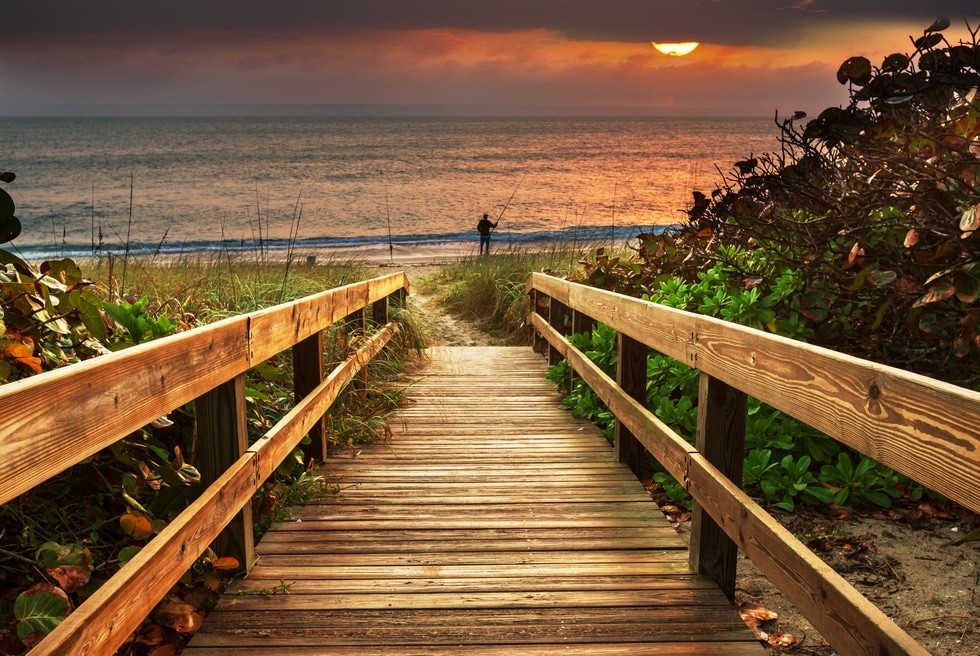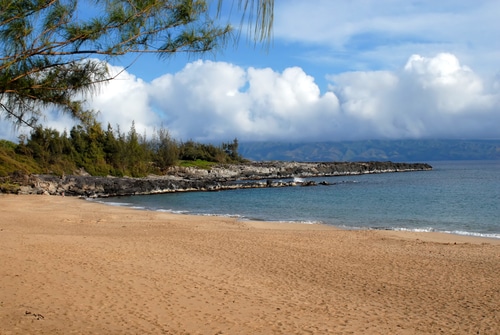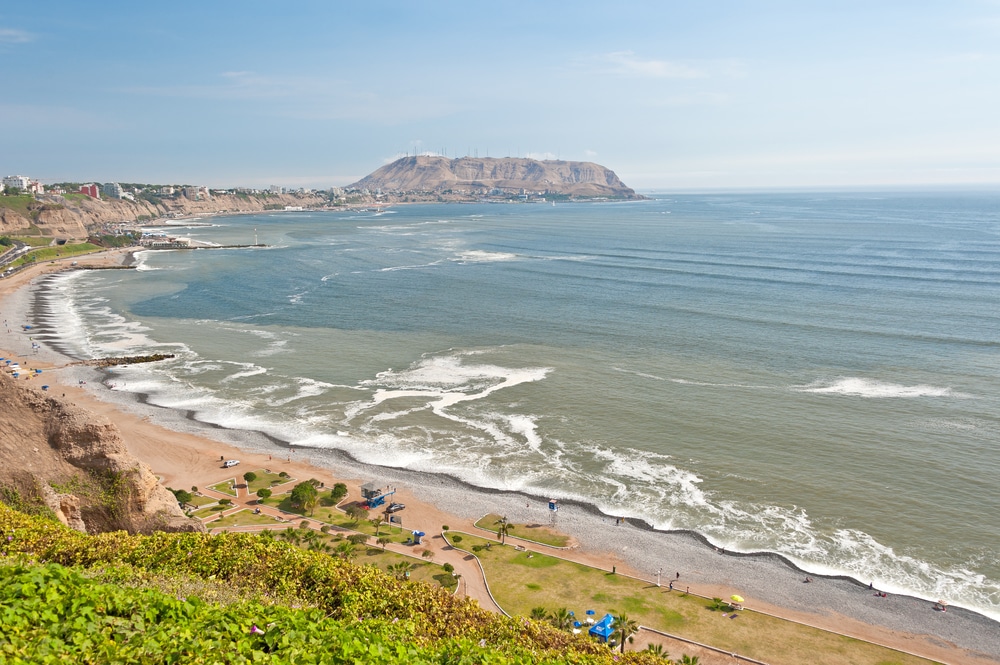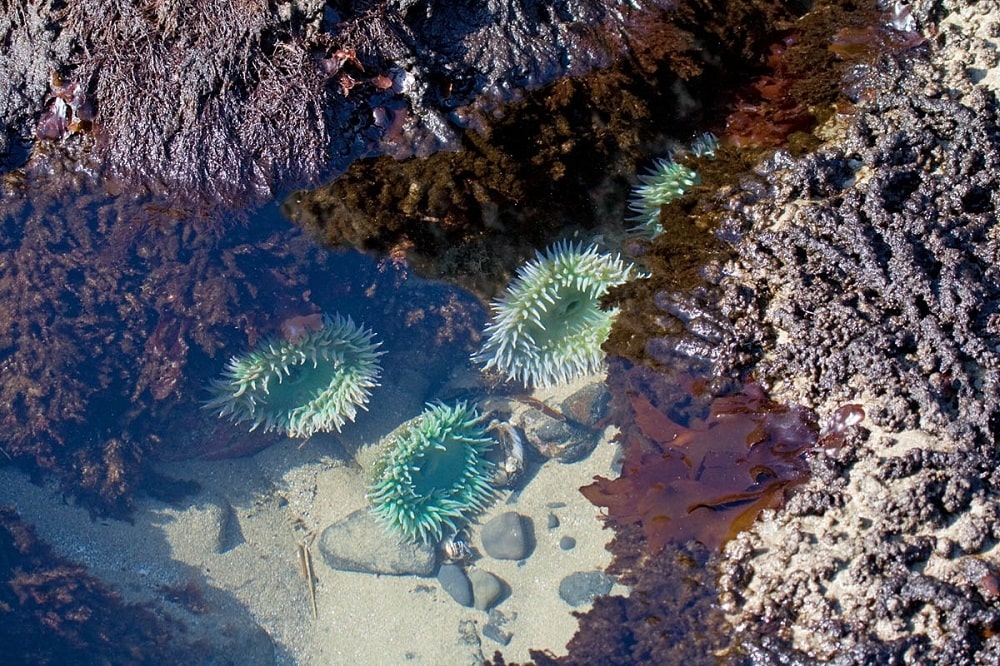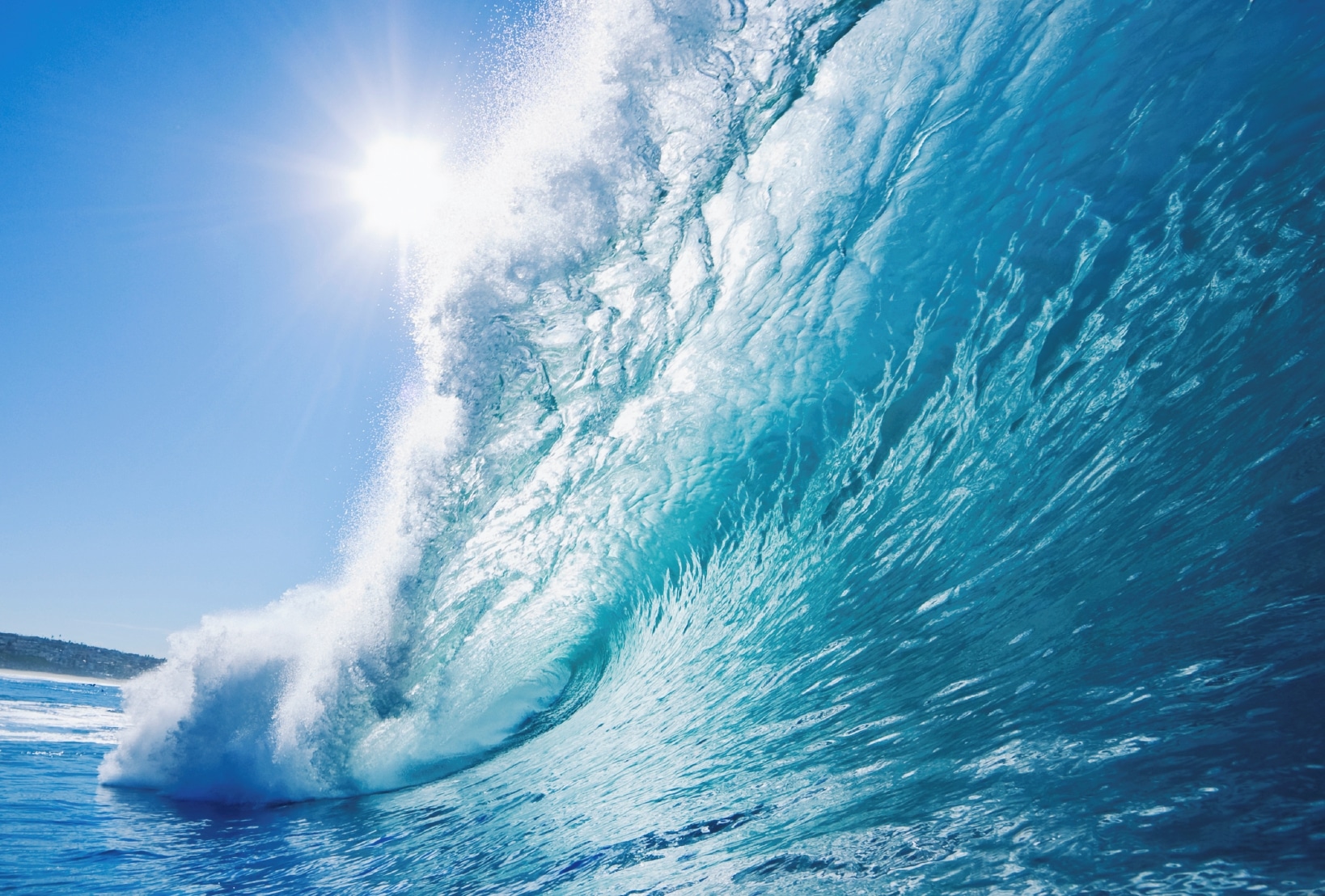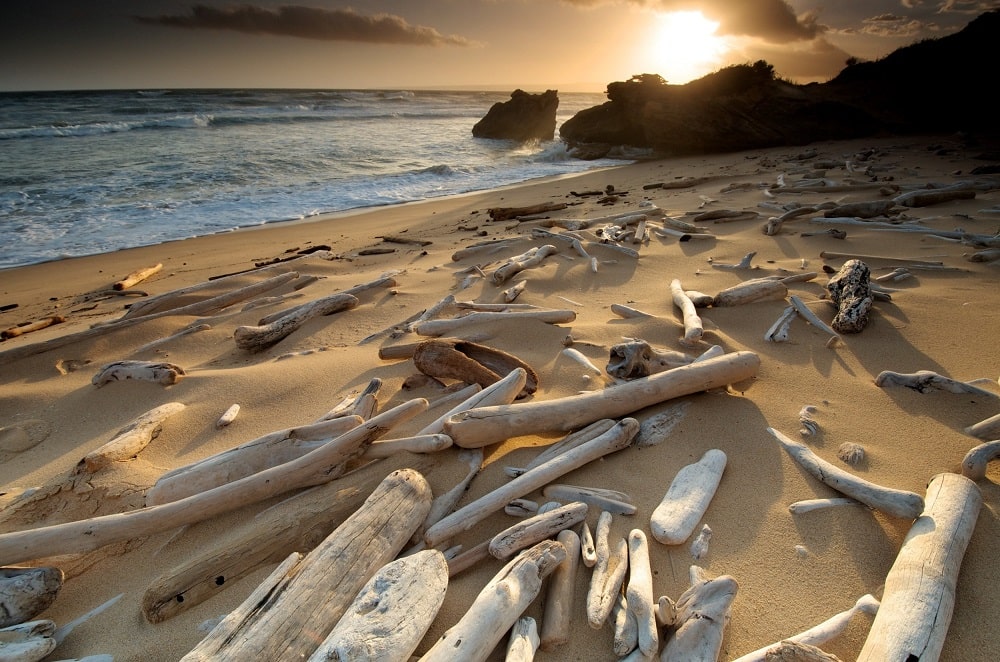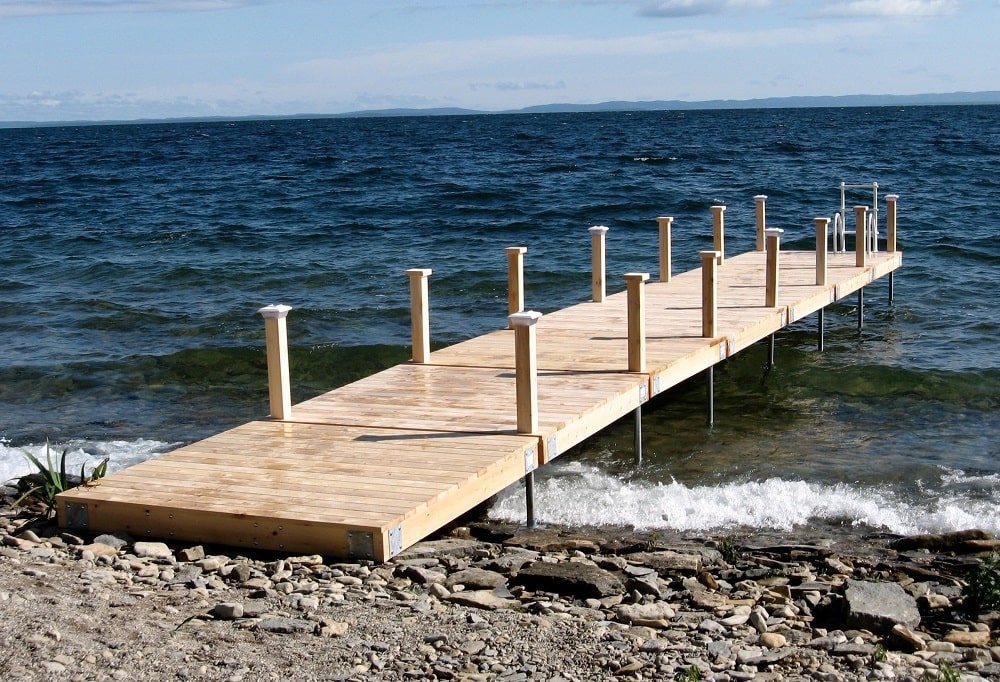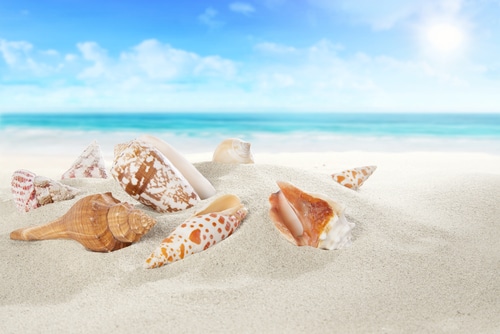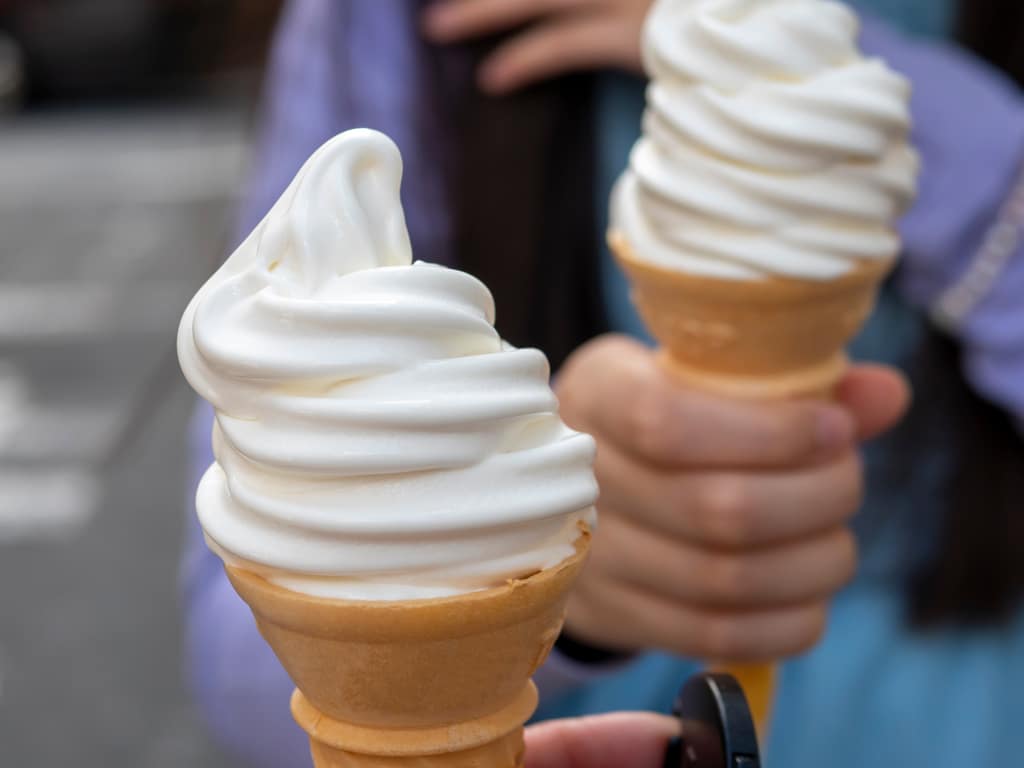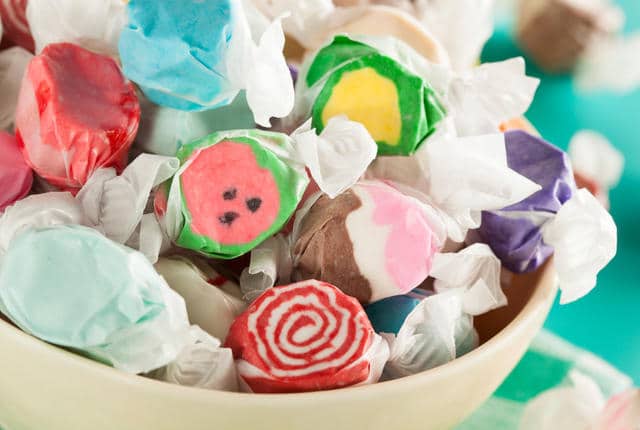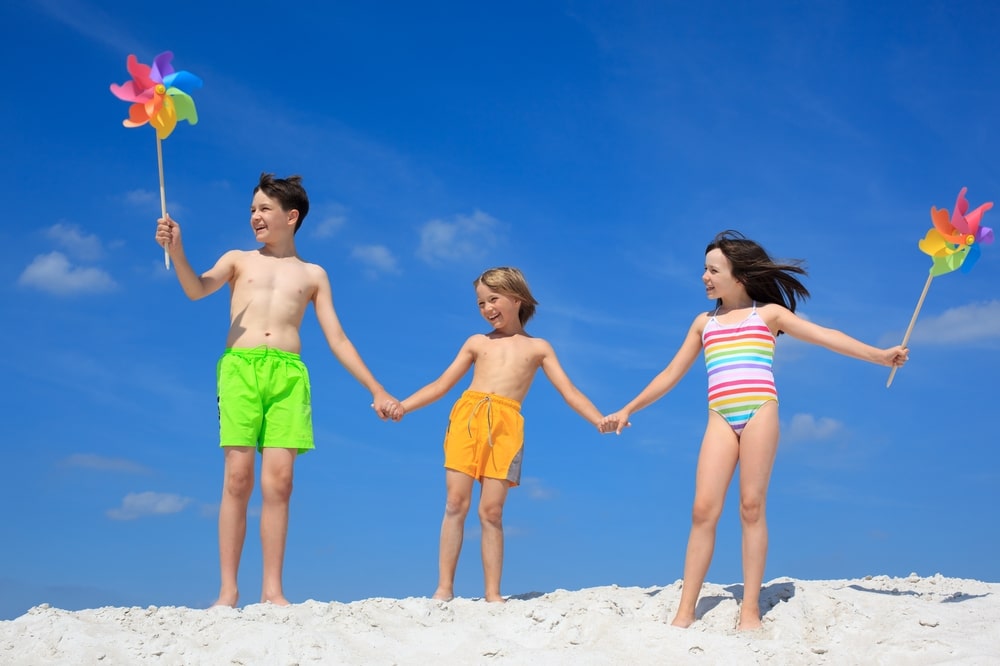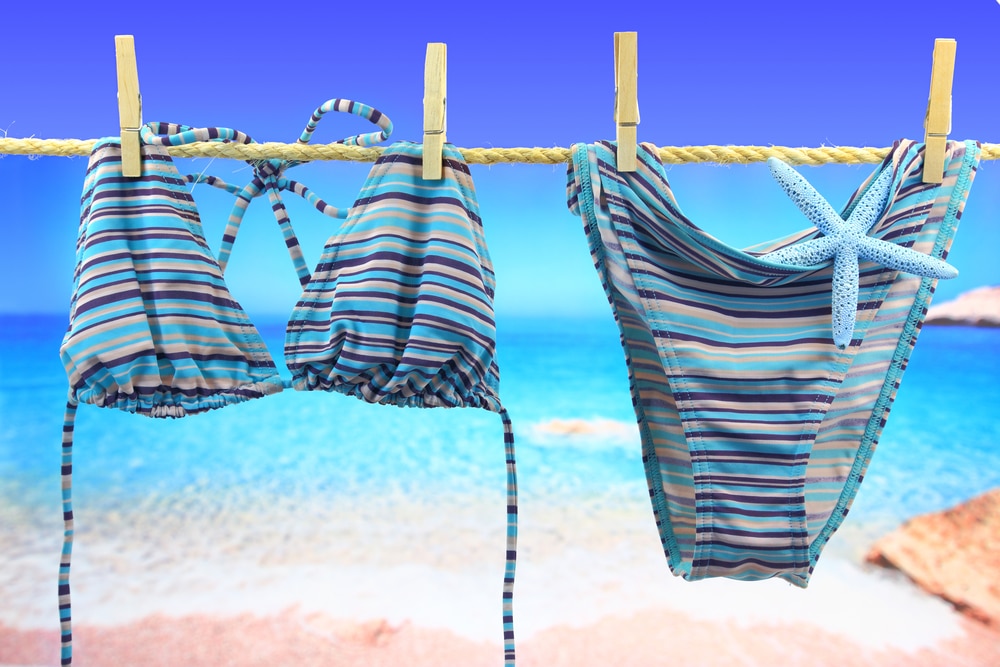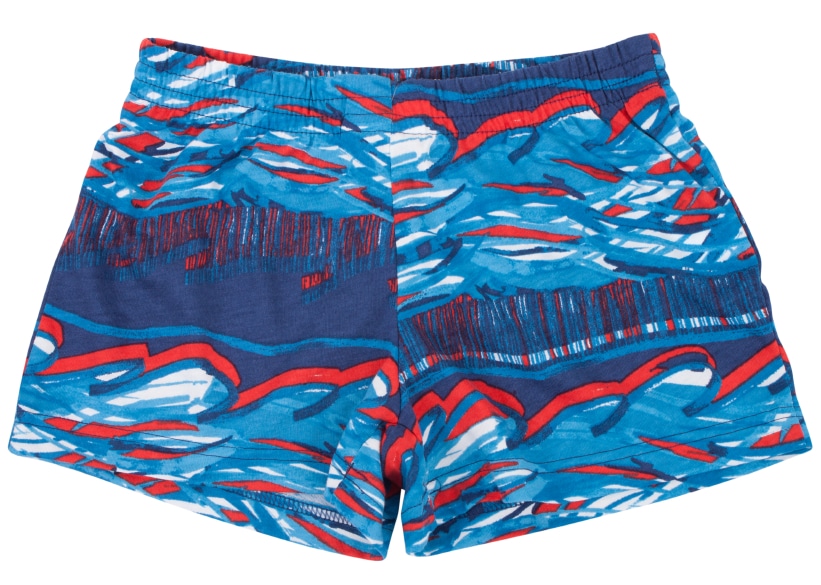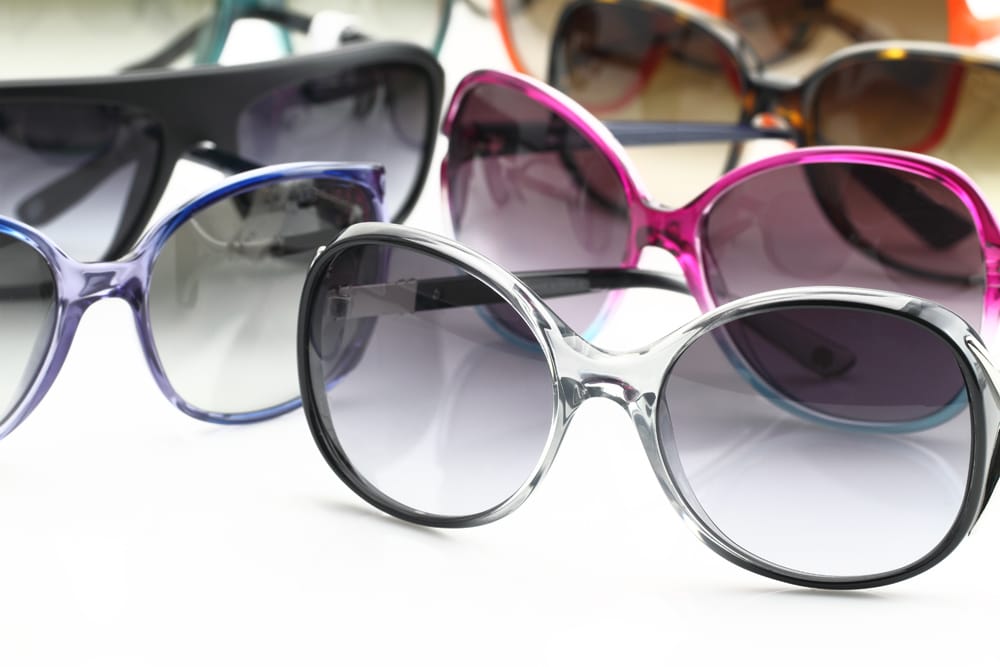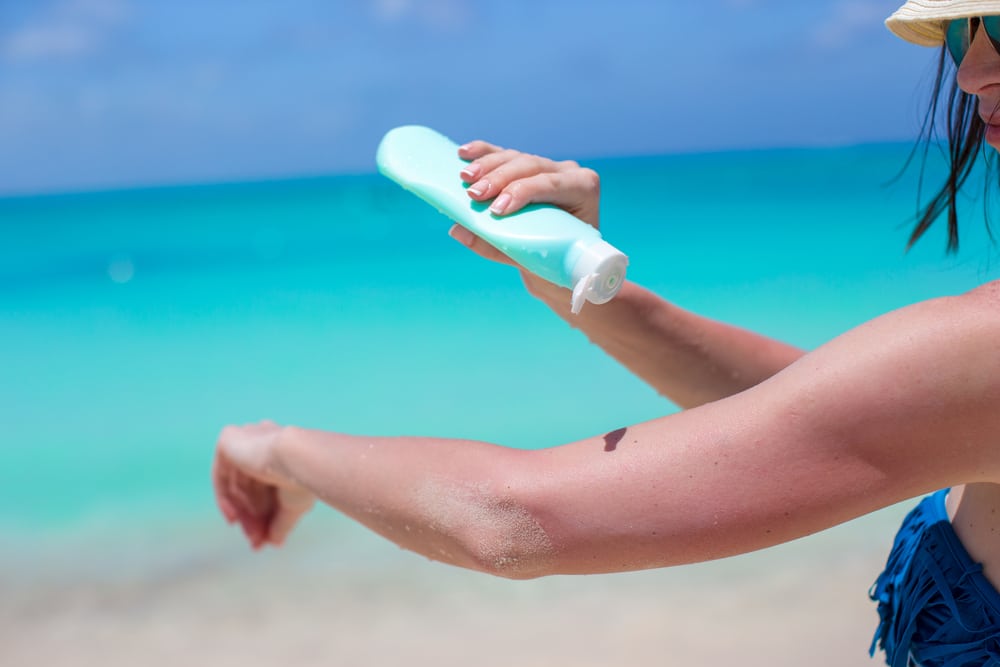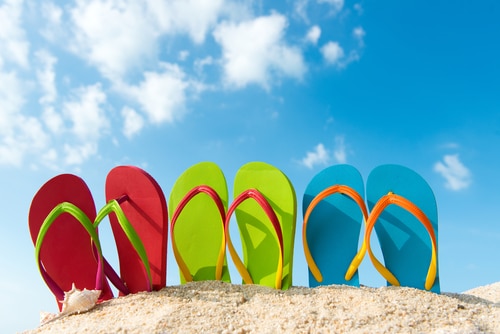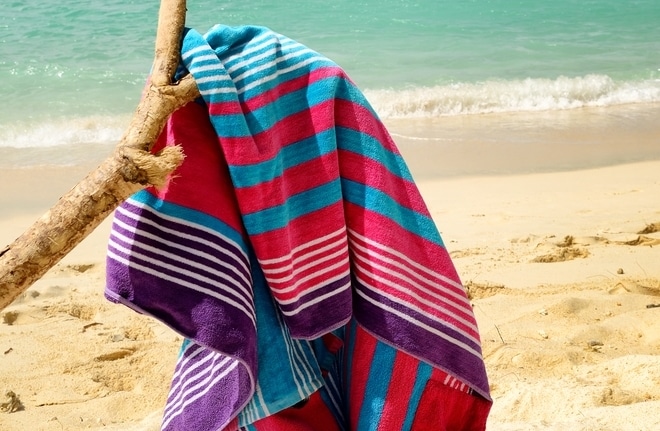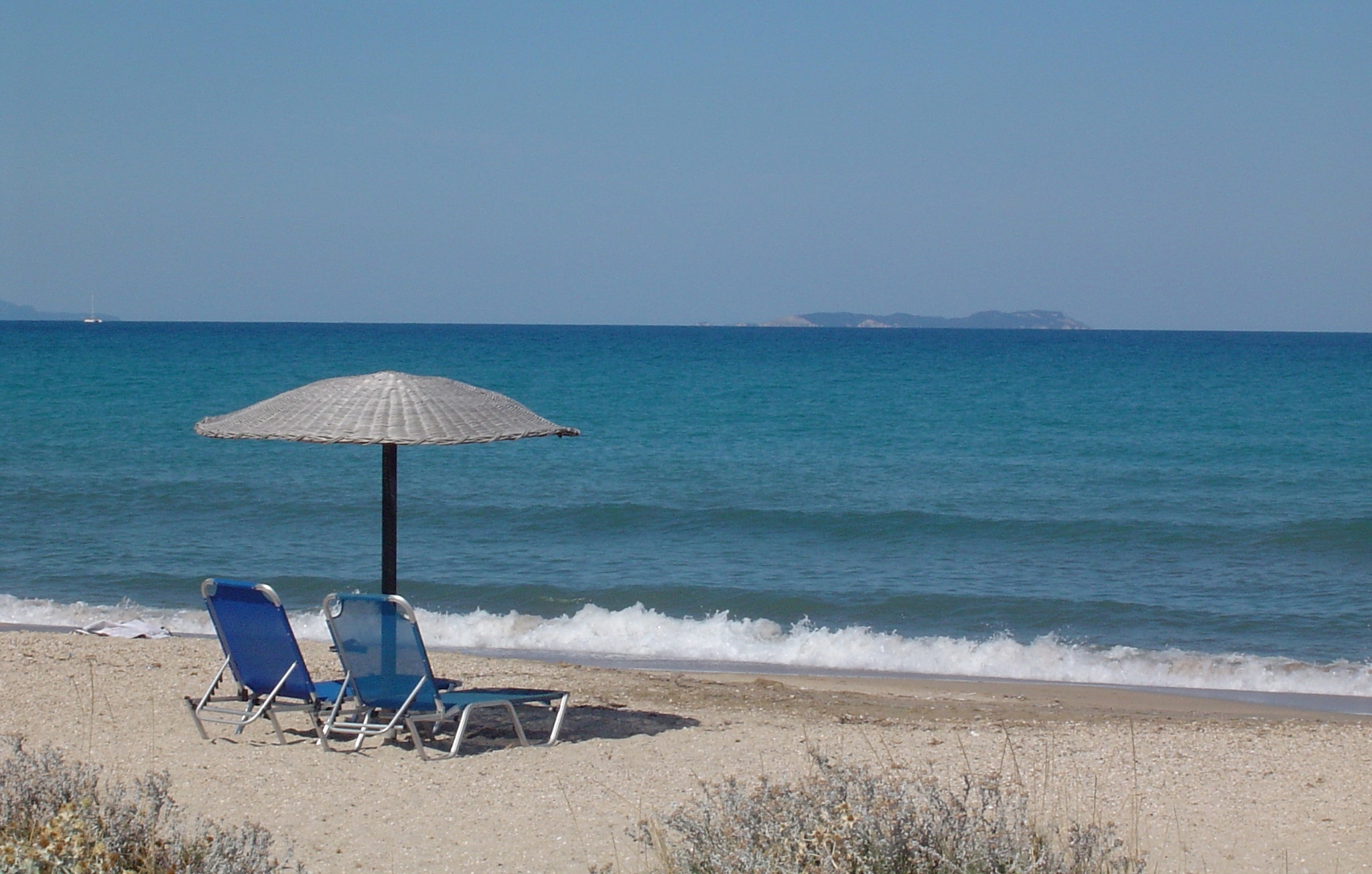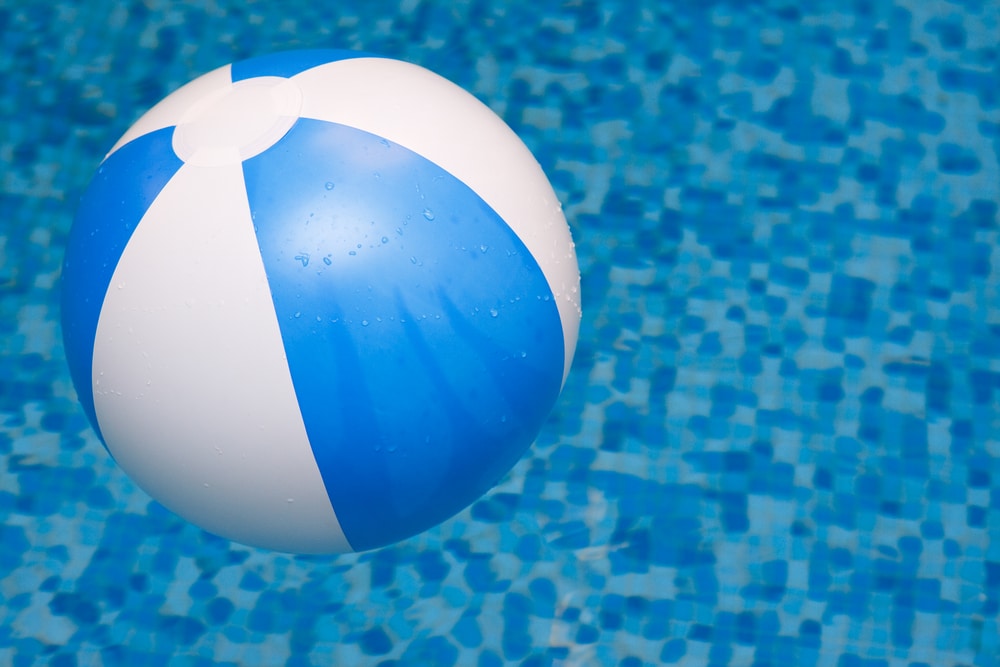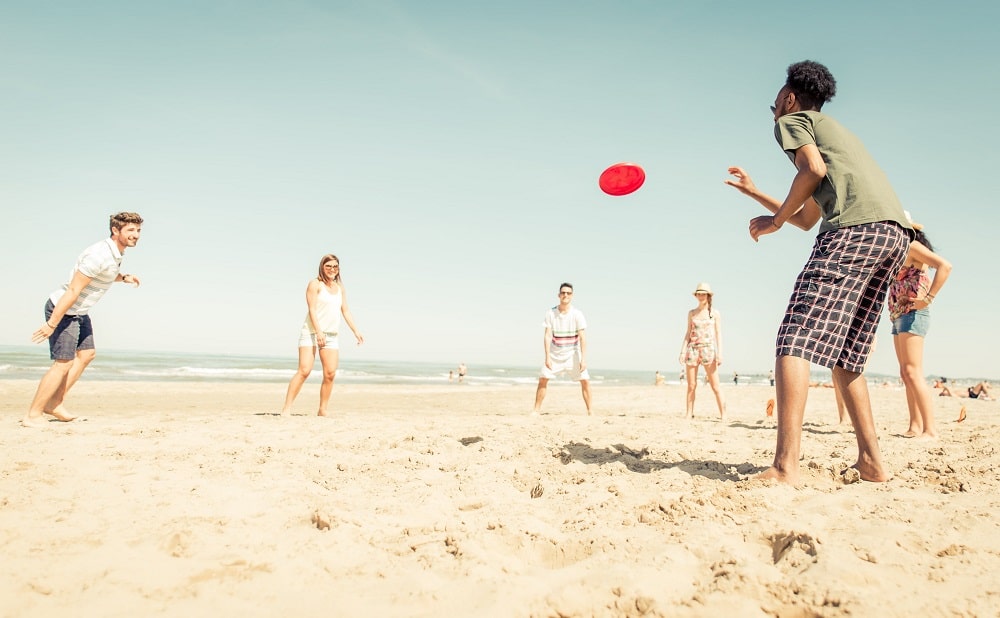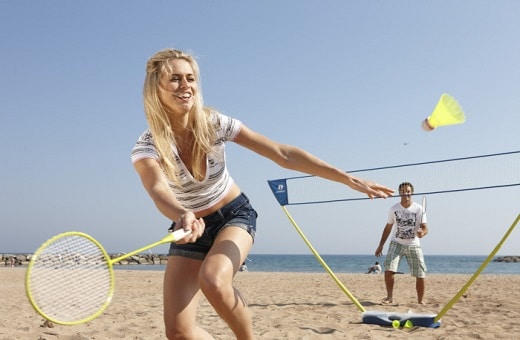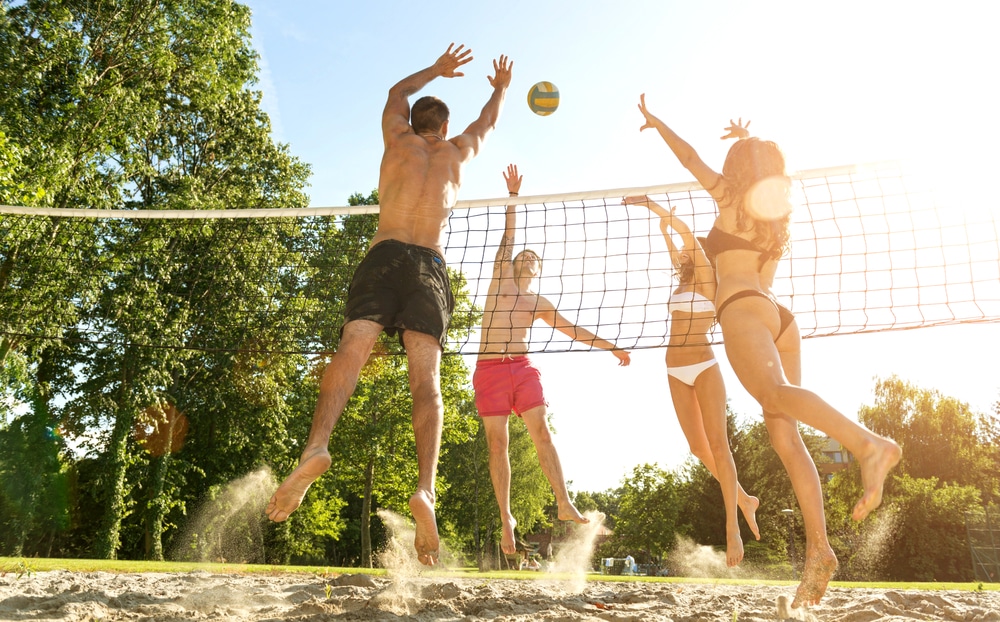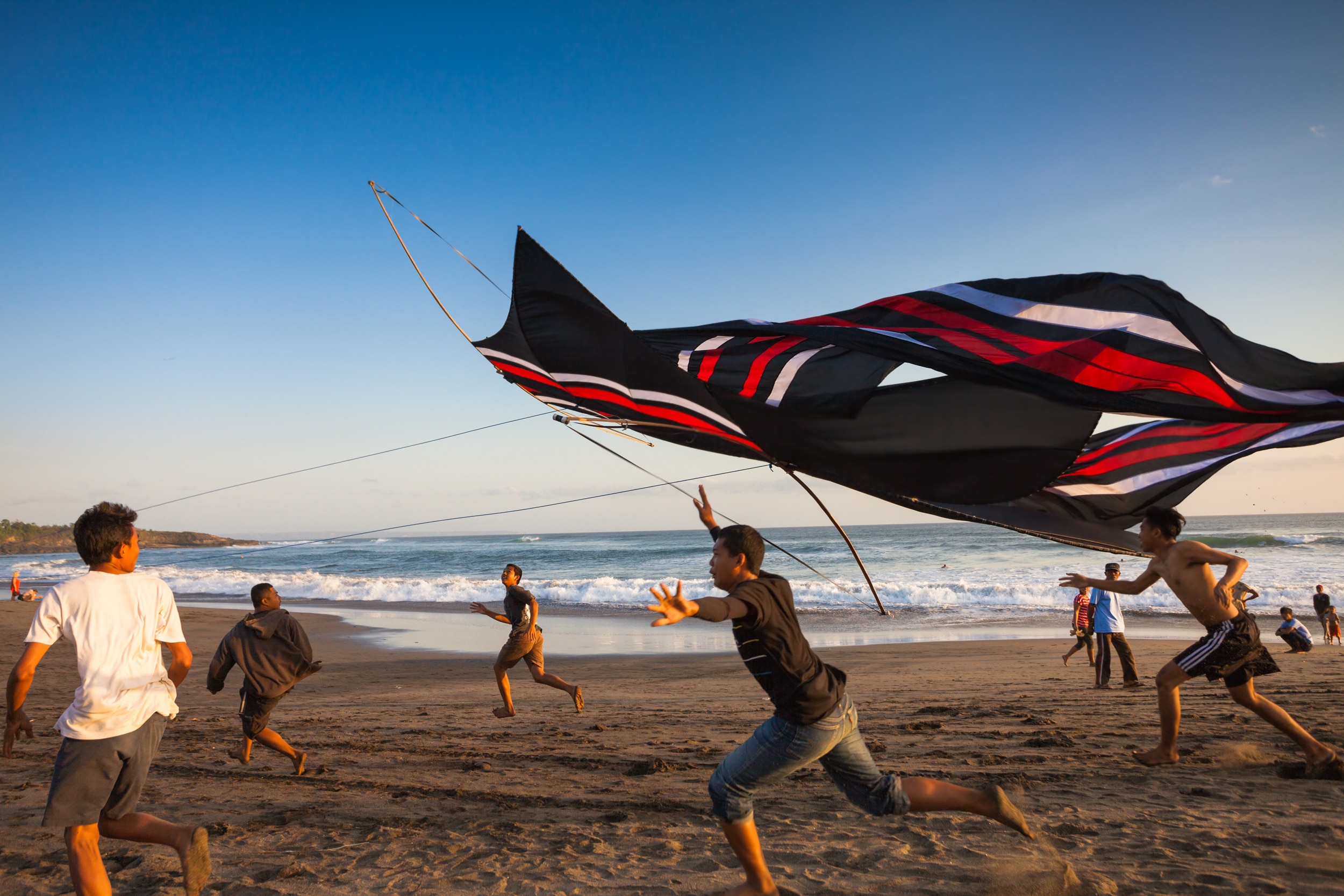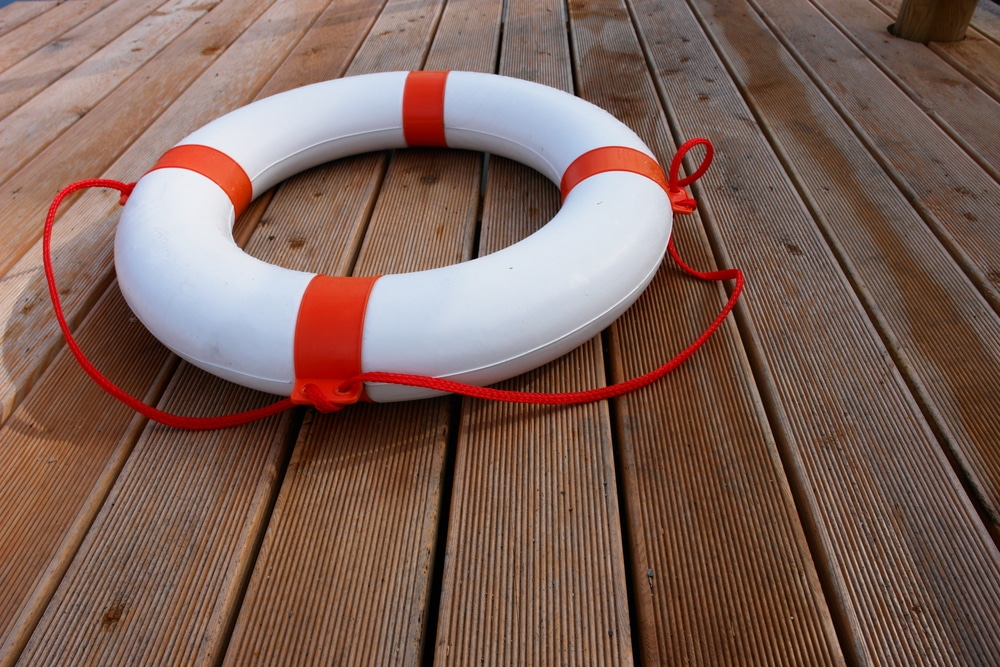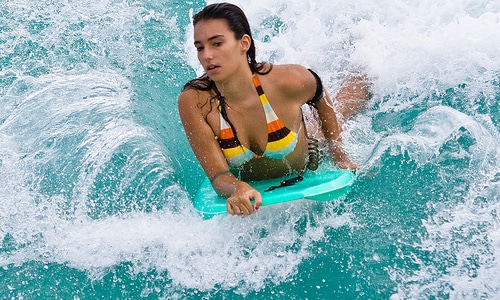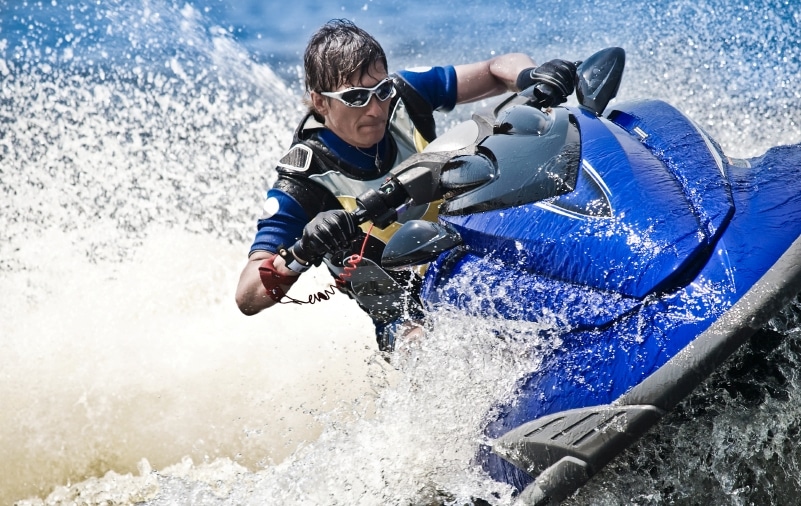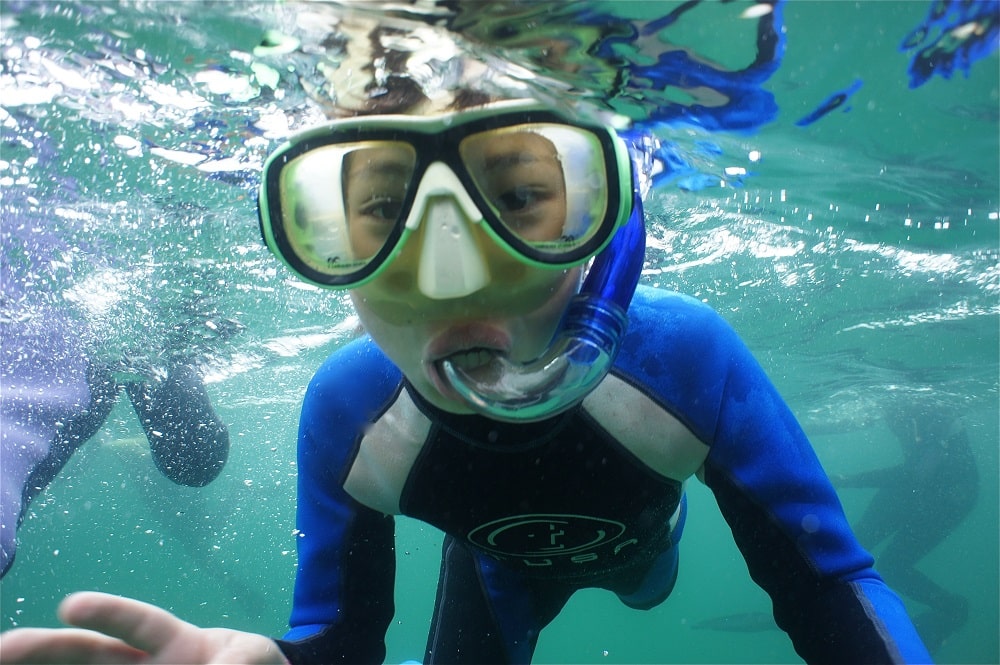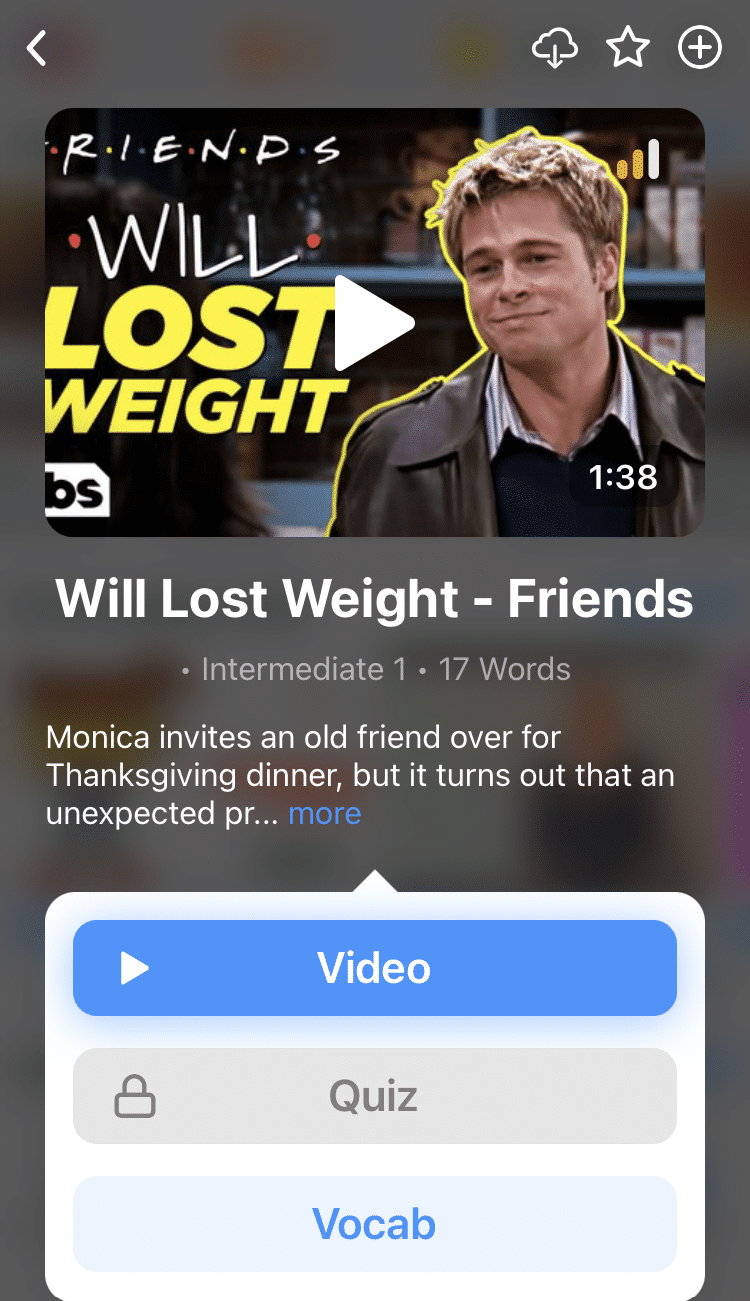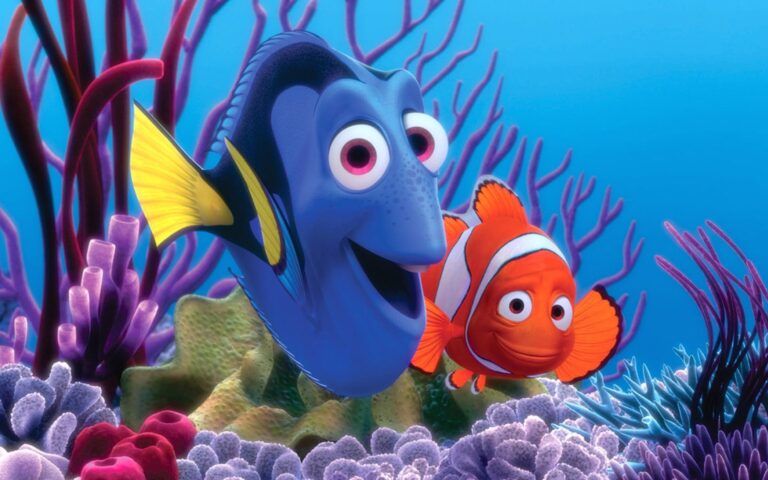Contents
- 1. Boardwalk
- 2. Shore
- 3. Coast
- 4. Sandbar
- 5. Tide Pool
- 6. Waves
- 7. Driftwood
- 8. Dock
- 9. Pier
- 10. Lighthouse
- 11. Cabana
- 12. Hammock
- 13. Palm Tree
- 14. Conch Shell
- 15. Sea Glass
- 16. Starfish
- 17. Seagulls
- 18. Soft Serve
- 19. Salt Water Taffy
- 20. Bathing Suit
- 21. Bikini
- 22. Trunks
- 23. Cover-ups
- 24. Rashguard
- 25. Sunglasses
- 26. Sunscreen
- 27. Sunburn
- 28. Flip-flops
- 29. Beach Towel
- 30. Beach Chair
- 31. Beach Cooler
- 32. Sandcastle
- 33. Beach Ball
- 34. Frisbee
- 35. Badminton
- 36. Volleyball
- 37. Kite
- 38. Sunbathing
- 39. Bonfire
- 40. Life Preserver
- 41. Lifeguard
- 42. Surfboard
- 43. Boogie Board
- 44. Paddleboarding
- 45. Motorboat
- 46. Snorkle
- 47. Scuba
- 48. Flippers
- 49. Windsurfing
- 50. Kayak
- Staying Safe: Beach Warnings and Cautions
- Have You Heard English Beach Slang in the Movies?
- And One More Thing...
50 English Beach Vocabulary Words for Summer

If you’re planning a trip to the ocean in an English-speaking country, you should know some vocabulary to talk about the beach more easily.
Today we’ll cover safety terms like “rip current” (a strong flow of water) to recognizing objects like “tide pools” (small pools of water) or “driftwood” (pieces of washed-up wood), to make your beach experience more comfortable and safe. Knowing this vocabulary will also help you understand signs and communicate with locals if needed.
Download: This blog post is available as a convenient and portable PDF that you can take anywhere. Click here to get a copy. (Download)
1. Boardwalk
Many beaches have a place where visitors can walk above the sand. These walkways, known as boardwalks, are usually made of boards or large wooden planks. Boardwalks are perfect for enjoying the beach without having to deal with any of the sand or water!
2. Shore
The area where the sand meets the water is called the shore.
3. Coast
The coast is the part of the land that’s close to the sea or ocean. Beaches are always located on the coast. If you live in a place that’s close to the ocean, you’re in a coastal region.
On the other hand, if there’s no large body of water anywhere near your city, you’re landlocked. This means you are surrounded by land, and there’s no ocean nearby.
4. Sandbar
Sometimes the force of the water pushes sand up to form a narrow island. This sand island is called a sandbar. Sandbars can sometimes be called reefs, especially if they’re made of coral (colonies of very small animals) or rocks instead of sand.
5. Tide Pool
When the tide goes from high to low, it can leave behind a tide pool, or a small pool of water. Tide pools are homes to all sorts of interesting creatures!
6. Waves
Waves are made when water moves towards the shore. Waves can be calm, or rise up high and leave behind a white foam.
7. Driftwood
Pieces of wood that are washed onto the shore by the water are called driftwood. That’s because to drift means to be slowly carried by water (or air). The wood drifts to the shore in the ocean tides.
8. Dock
A dock (also called a wharf) is a structure that goes from the shore into the water. It’s used for tying ships down so they don’t drift away (in fact, tying a ship to a dock is called docking).
9. Pier
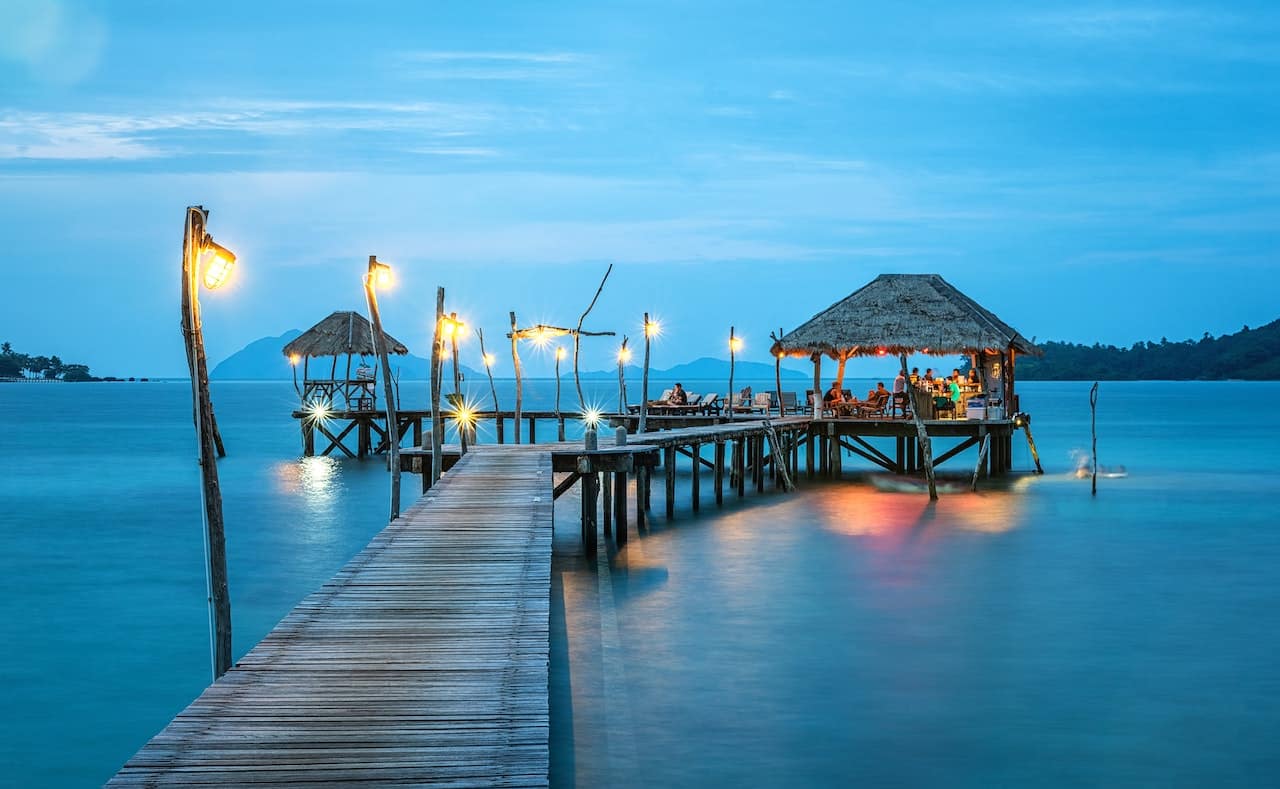
When a dock rises high above the water and extends much further away from the shore, it’s called a pier.
Unlike docks, piers are mainly built for entertainment—so people can stroll above the waves and enjoy the beach views. Piers can have shops, restaurants and even amusement rides, which is why they’re often popular attractions.
10. Lighthouse
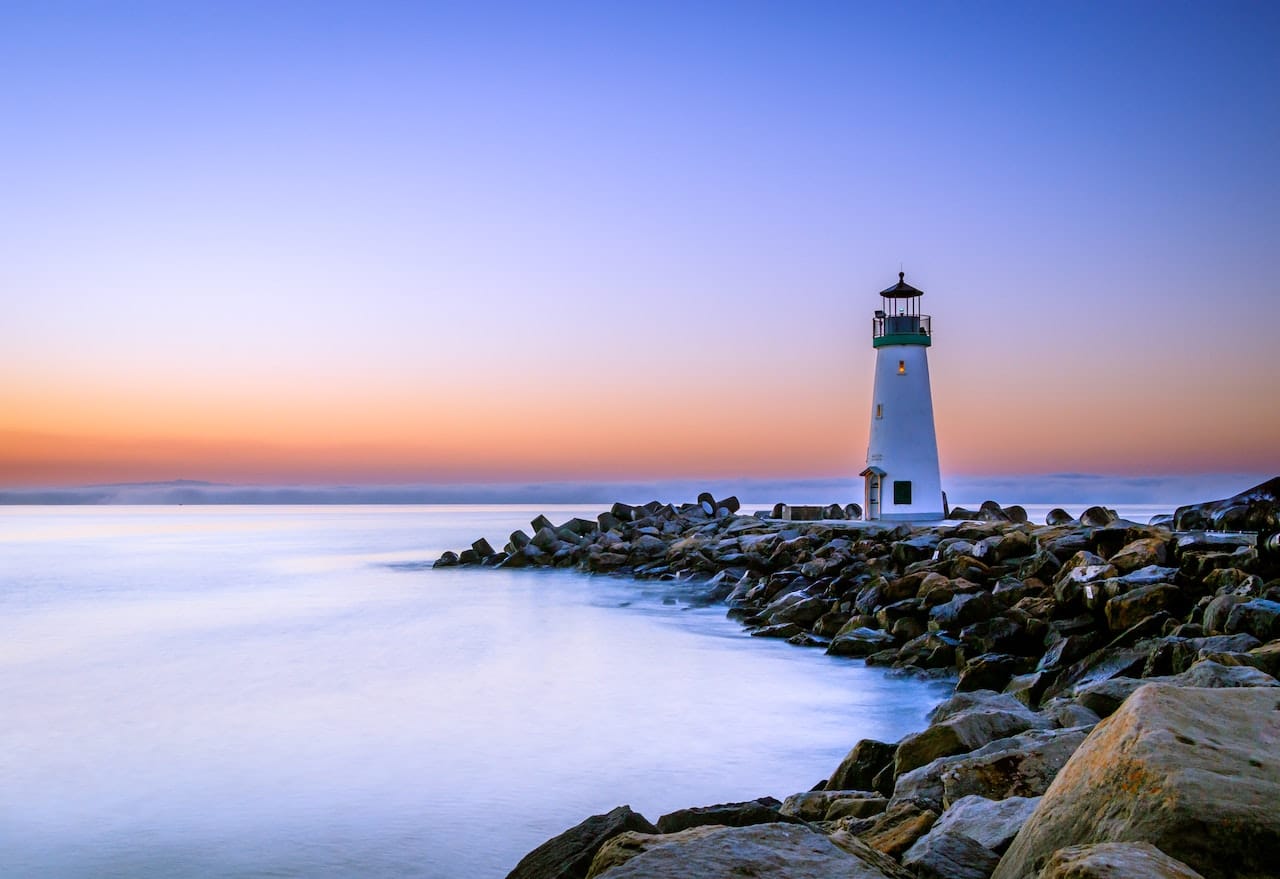
A lighthouse is a tall, tower-like structure that’s found along coastal areas and islands. Lighthouses aren’t there just for show—they’re meant to help ships and boats navigate by sending out light and signaling the presence of land.
Many lighthouses have become tourist destinations, allowing visitors to climb to the top and get a panoramic view of the coastline.
11. Cabana
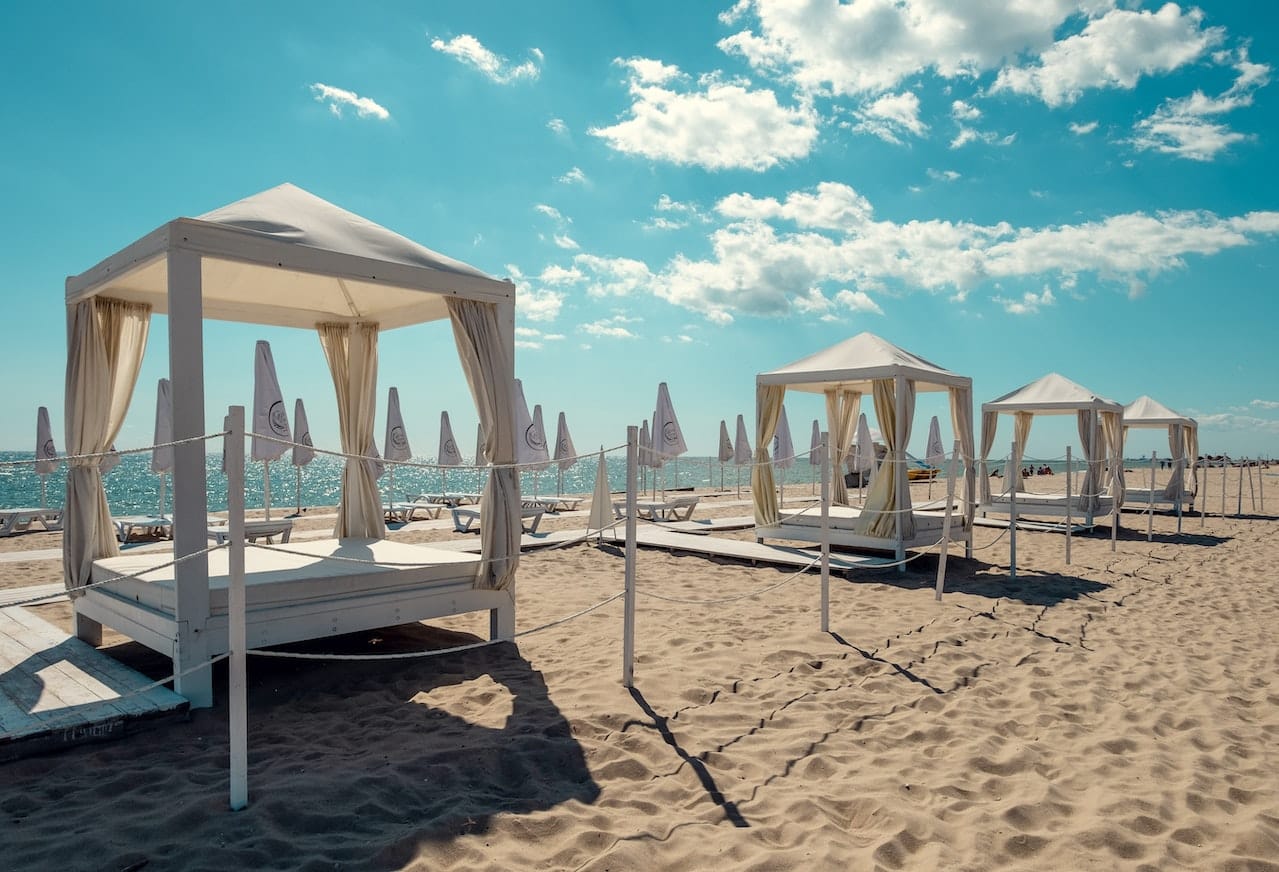
A cabana is a small, temporary structure you’ll often spot at beaches and tropical resorts. They protect you from the sun while giving you a cozy space to relax in, with chairs or loungers inside.
12. Hammock
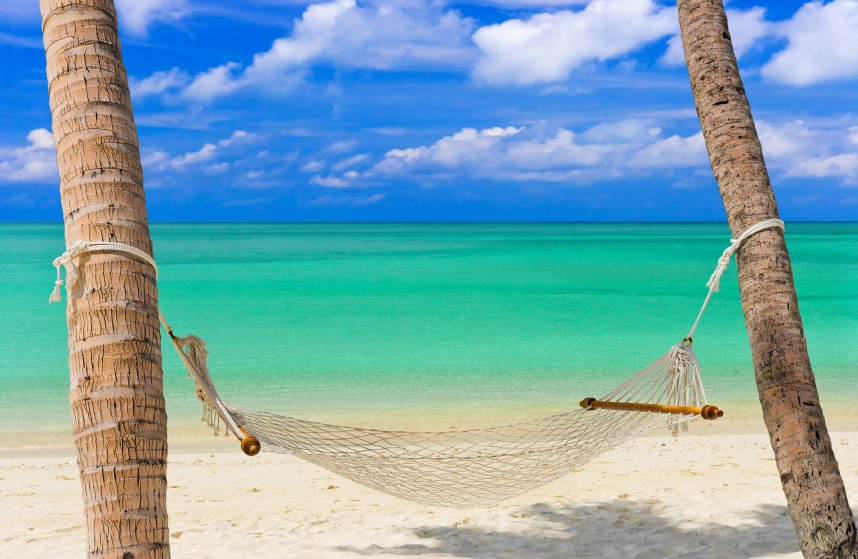
A hammock is a comfortable hanging bed or swing made of fabric or netting, and it’s tied to two trees or other supports.
Hammocks are perfect for napping, reading a book or simply unwinding and enjoying the gentle breeze and scenery at the beach.
13. Palm Tree
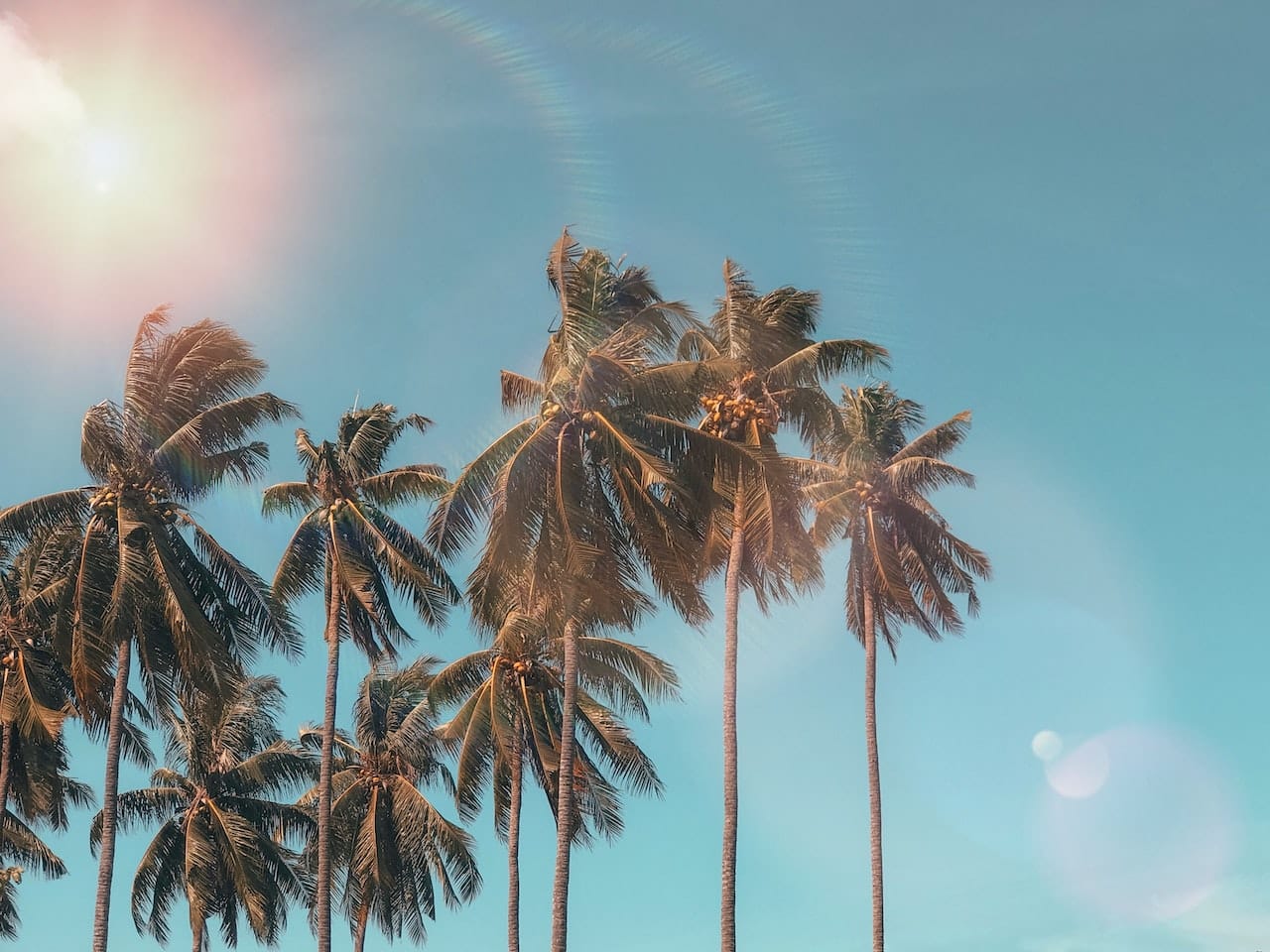
Look up beach photos online, and chances are they have palm trees in the background! Their most distinctive feature is their crown of large, fan-shaped leaves. Coconut trees are actually a type of palm tree.
Palm trees often grow in warmer coastal areas, like the Caribbean, Hawaii, Florida and California.
14. Conch Shell
You might find seashells on the shore, but be on the lookout for conch shells, too.
These are seashells with a spiral pattern (a pattern that starts at a point and circles out and away from this point). They say that if you put a large conch shell to your ear, you can hear the ocean!
15. Sea Glass
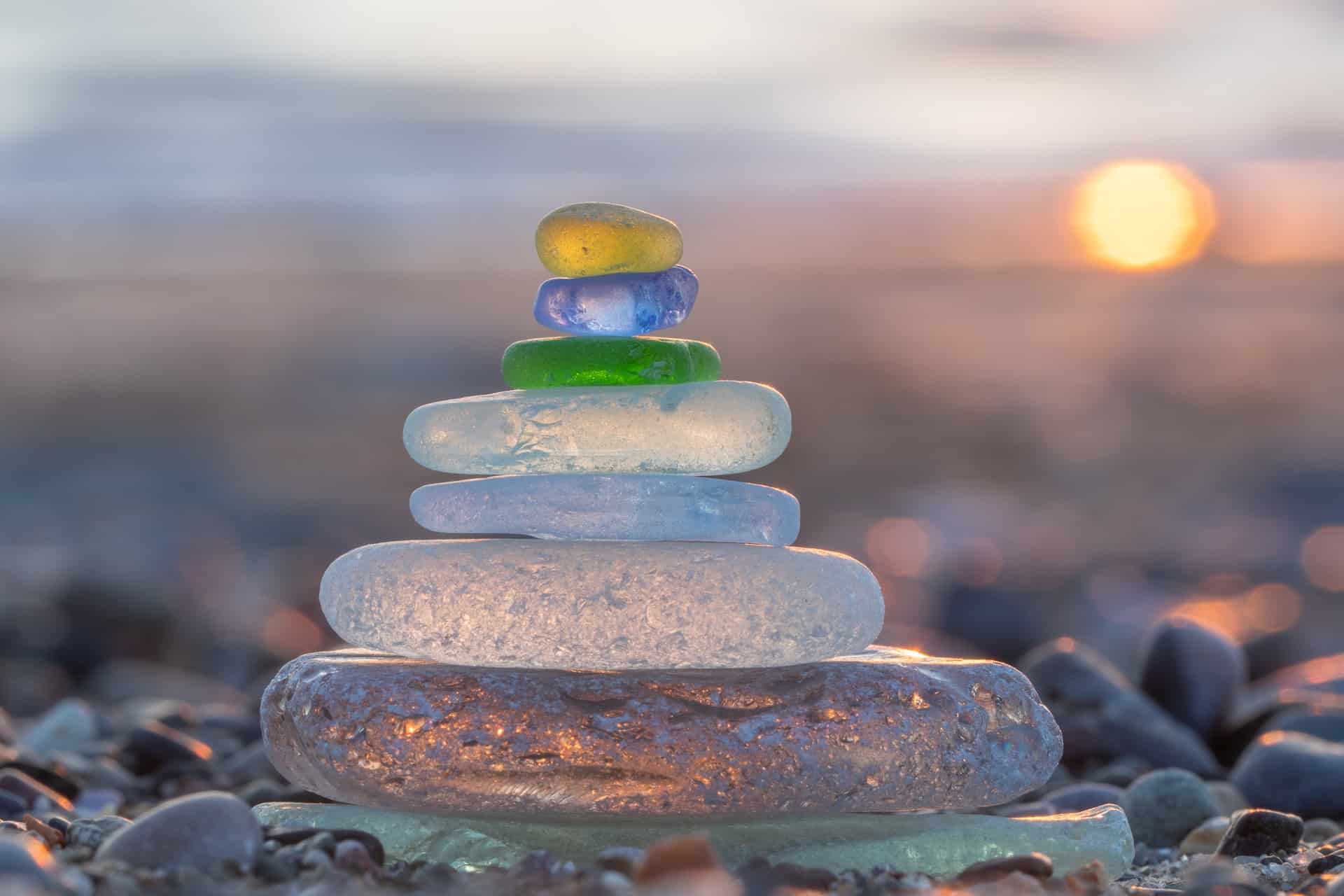
Sea glass is also known as beach glass or mermaid’s tears, and it’s pretty enough that it’s sought after by collectors. You can find sea glass along shorelines sometimes. It’s formed when broken glass objects, such as bottles or jars, are tumbled and smoothed by the ocean’s waves and sand over time.
16. Starfish
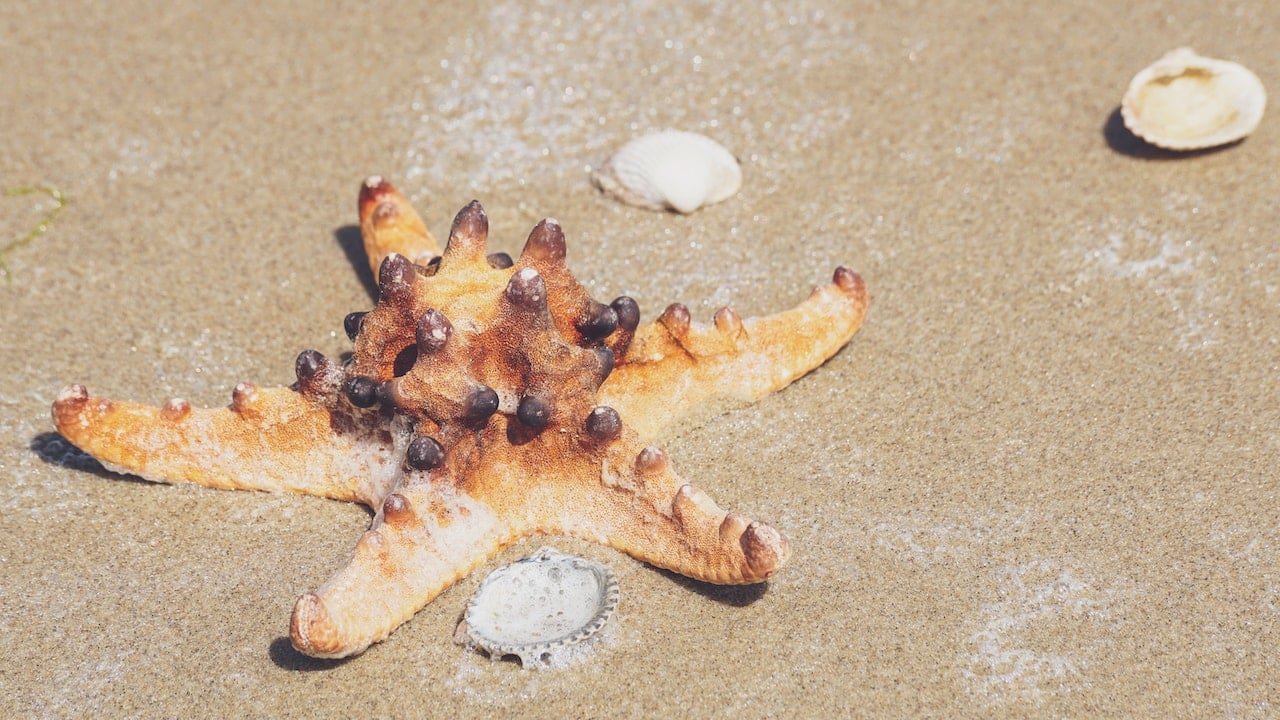
Like palm trees, starfish have become an iconic (widely known and easily recognized) symbol of beaches. Fun fact: they can regenerate (re-grow) any of their five limbs!
17. Seagulls
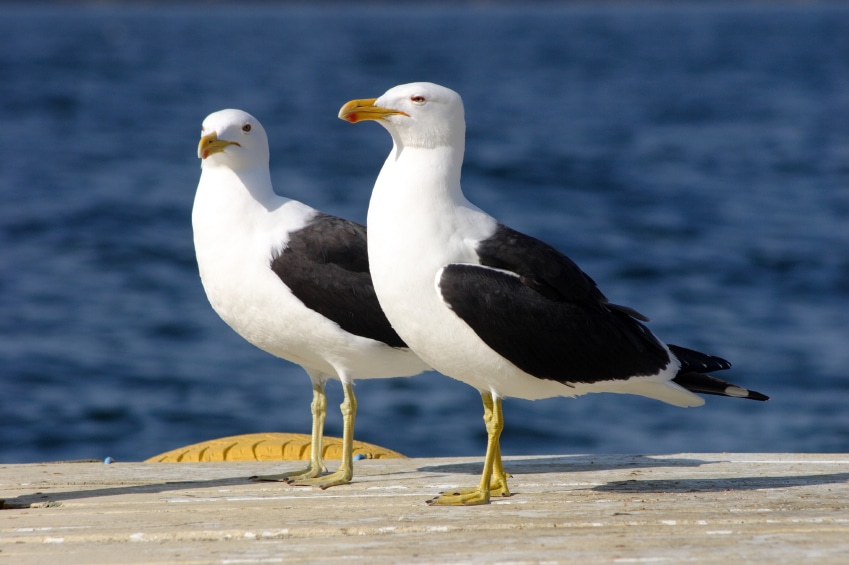
Seagulls are probably the most famous bird associated with beaches. They have white and gray feathers, and they’re often seen gliding gracefully above the water or swooping down to snatch food scraps.
18. Soft Serve
Nothing beats soft serve ice cream! It is a soft, creamy, melt-on-your-hands ice cream that is served in cones. Soft serve ice cream is a perfect summer treat.
19. Salt Water Taffy
Salt water taffy isn’t made from ocean water, but it’s made with salt and water. This sticky candy was first created on the beach in Atlantic City, New Jersey, but it can now be found at beaches all around the United States.
20. Bathing Suit
A bathing suit (also called a swimsuit) is, quite simply, the outfit you wear to swim.
It’s not the same as a business suit (a formal jacket you wear to professional events) or a birthday suit (the clothes you were born in… or in other words, completely naked!). Unless, of course, you’re at a nude beach, which is a beach that allows people to walk around and swim with no clothes on.
21. Bikini
A bikini is a woman’s two-piece bathing suit, which leaves the stomach and back exposed. There are a number of variations on the bikini, like the tankini (a two-piece bathing suit with a tank top for the top part) and the monokini (a bikini connected into a single-piece bathing suit by a strip of fabric).
Don’t worry, we native speakers don’t remember all these terms, either. When in doubt, just call it a bikini!
22. Trunks
Trunks are the male versions of swimsuits, and they usually just look like pairs of shorts. There is no top part.
23. Cover-ups
Some women like to wear cover-ups at the beach. Cover-ups are light pieces of clothing that are either worn over or wrapped on top of a bikini.
Some women wear cover-ups so they won’t get too tan or burned from the sun. They’re used for modesty, because some people don’t want to expose lots of skin. They’re also sometimes worn just because they look nice and fashionable, or for warmth when the beach gets chilly at night.
24. Rashguard
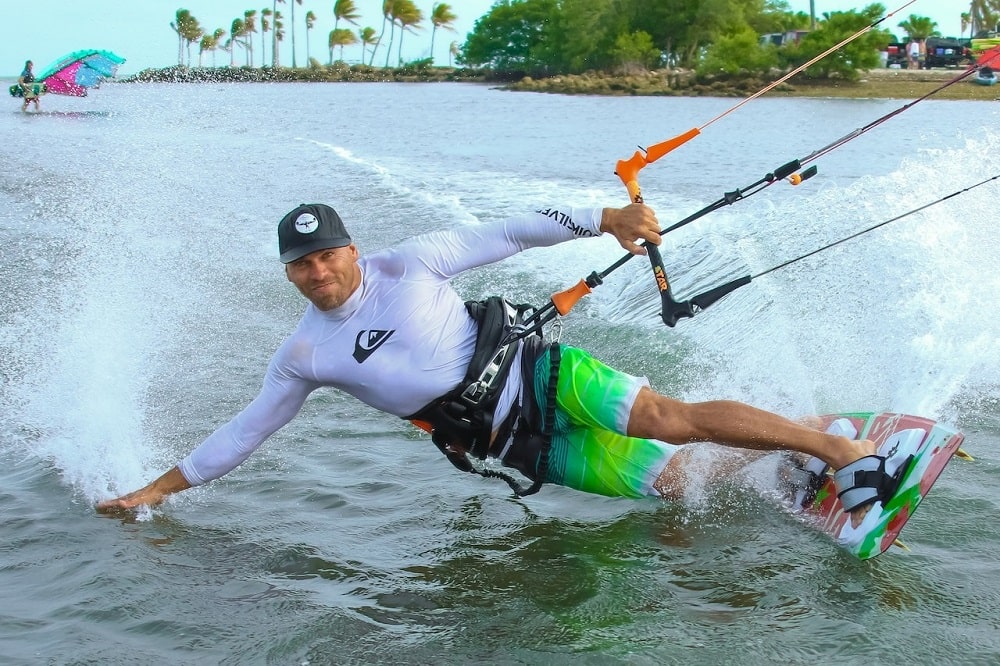
If you’ll be getting into the water for a long time, you can wear a rashguard to protect your skin. A rashguard covers up most of your upper body, and it helps prevent rashes from your skin rubbing against a surfboard or other equipment. They’re a favorite among surfers!
25. Sunglasses
Sunglasses are dark glasses worn to protect your eyes from the sun. Sunglasses are a must-have item at the beach, but of course you can wear them any time you need to keep your eyes safe from bright lights (though probably not from explosions).
26. Sunscreen
Sunscreen, also called sunblock, is a cream or spray applied to the body to keep it from getting burned by the sun. The SPF, or Sun Protection Factor, tells you how effective the sunscreen is. The higher the number, the less sun will get to your skin.
27. Sunburn
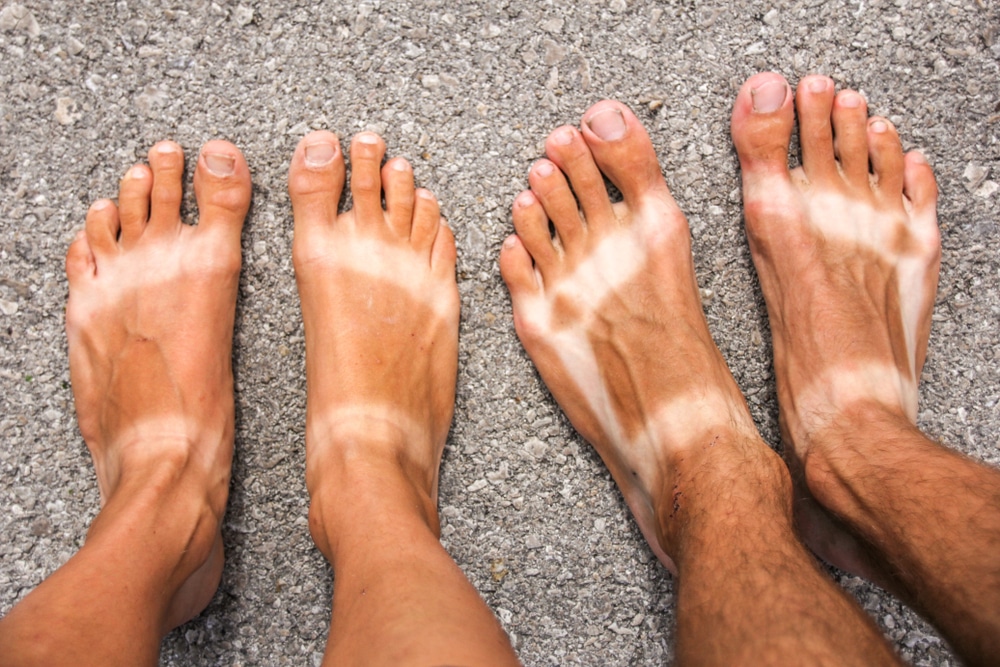
Sunburn is when your skin gets irritated or red from getting too much sun. The sun is the strongest from 10 AM to 4 PM, so if you’re going to the beach then, take breaks under the shade and put on a lot of sunscreen!
28. Flip-flops
Sandals that have one strap in the front that connects between the big toe and the second toe are called flip-flops. It’s easy to see why: they flip and flop around a lot!
29. Beach Towel
A bath towel is what you use to dry yourself when you come out of the bath or shower. A beach towel is the same, but for the beach. Beach towels are usually larger than regular towels, so you can lay them down on the sand and then lay on top of them.
30. Beach Chair
The beach even has its own special kind of chair. Beach chairs are usually portable (easy to move around) and are made of metal poles with fabric stretched between them to form a back and a seat.
For extra comfort, bring along a beach lounger, which is a large reclining chair that’s big enough to lie down on. Who said going to the beach means you need to touch sand?
31. Beach Cooler
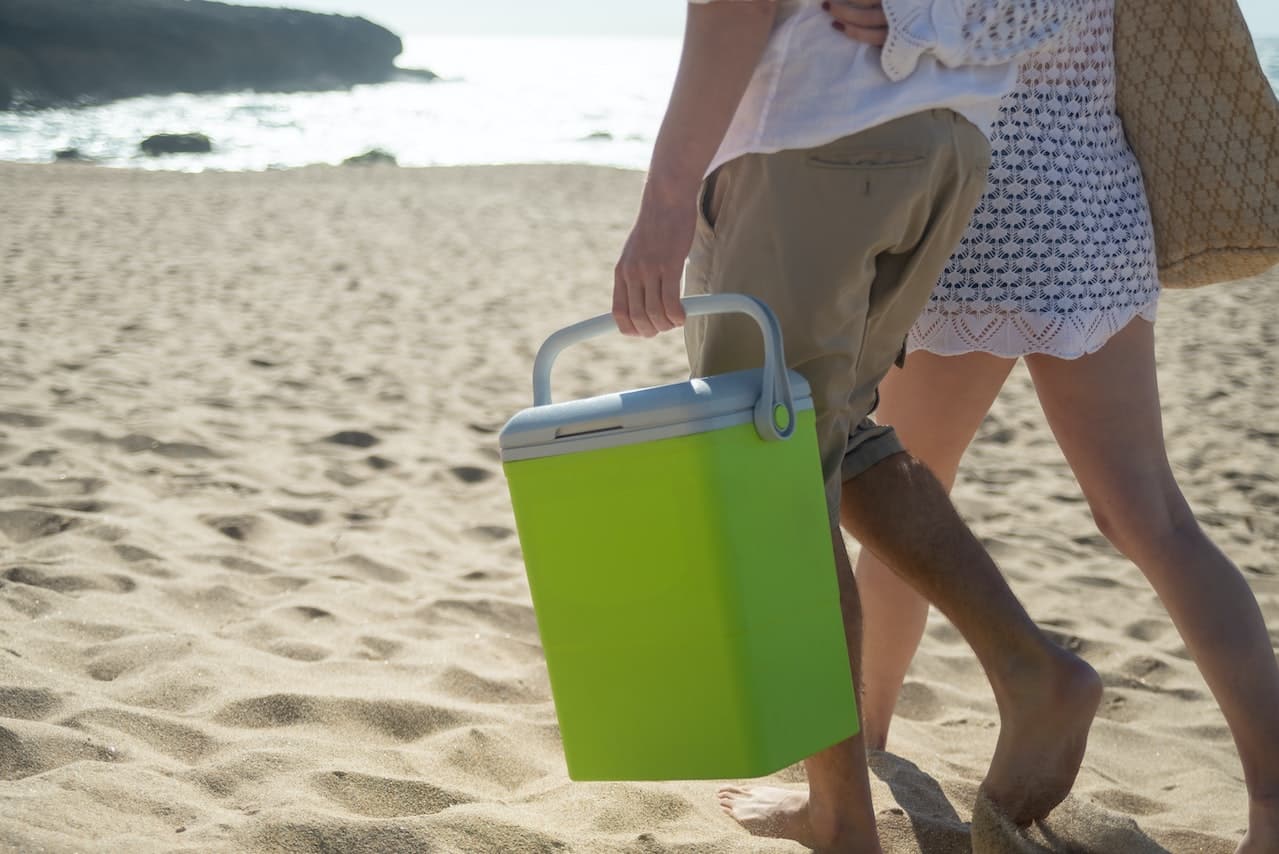
Given how warm it is at the beach, many people like to bring beach coolers. These are small containers meant to keep food and drinks cool at the beach, such as bottled water, iced tea, snacks and fruits. This way, even after a couple of hours, you can reach into your cooler and quench your thirst with a refreshing drink.
32. Sandcastle
One common beach pastime is building sand castles. These are structures made of packed wet sand. You’ll need a bucket and a shovel (or a spade, if you’re in the UK), which is a flat spoon-like tool used for moving dirt and sand around.
33. Beach Ball
A beach ball is a large, inflatable ball, usually patterned with slices of bright colors. Beach balls are light and can float in the water and the wind, which makes them both excellent and terrible for beaches.
34. Frisbee
A frisbee is a flat disc that’s thrown by spinning it. Catching frisbees is a great beach activity, but frisbees are also used in picnics and by some pretty awesome dogs.
35. Badminton
Like tennis, badminton uses two rackets to pass a ball between two people. The smaller rackets and special feathered ball (called a birdie) make it great for a game on the beach.
36. Volleyball
Volleyball is a sport where two teams pass a special ball over a net (a volley is the passing of a ball before it touches the ground). In beach volleyball, a beach ball can be substituted for a volleyball, and the sand makes the perfect surface to dive onto for that last minute save.
37. Kite
Kites use a frame and fabric or paper to float up in the air. You hold a string attached to the kite and let it fly high. Flying a kite requires good wind and plenty of space. The beach is the perfect place!
38. Sunbathing
Sometimes, all you want to do is lie down and enjoy the sun. Sunbathing is when you bathe in the sun instead of the water; in other words, you let the sun’s rays wash over you. Sunbathing is usually done with the intention of getting a tan, and is sometimes also called suntanning.
39. Bonfire
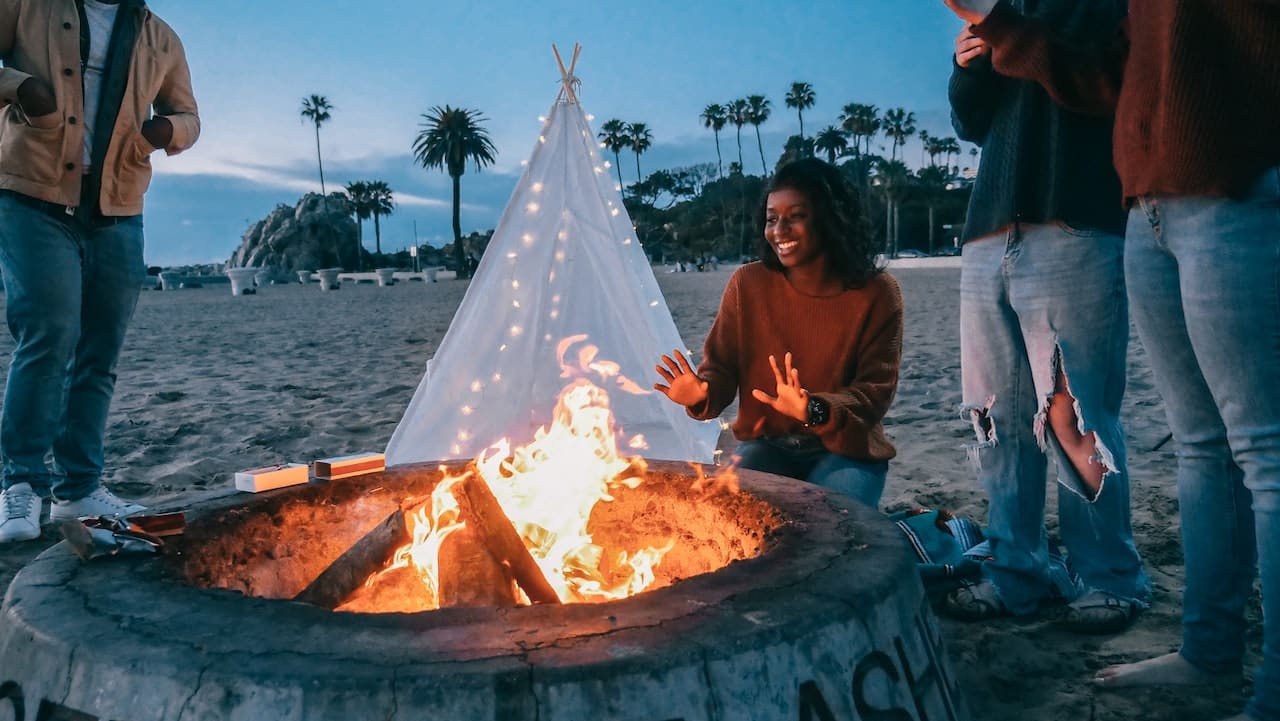
A bonfire is a large outdoor fire that’s on the beach, usually at night. It’s a fun, cozy activity to do with friends or family—you can hang out at the beach after sunset while roasting marshmallows and sharing stories.
40. Life Preserver
Even if you know how to swim, it’s important to stay safe when you go out onto the water. A life preserver, or a life jacket, is a vest made from an inflated material that will help you float if you fall in the water.
41. Lifeguard
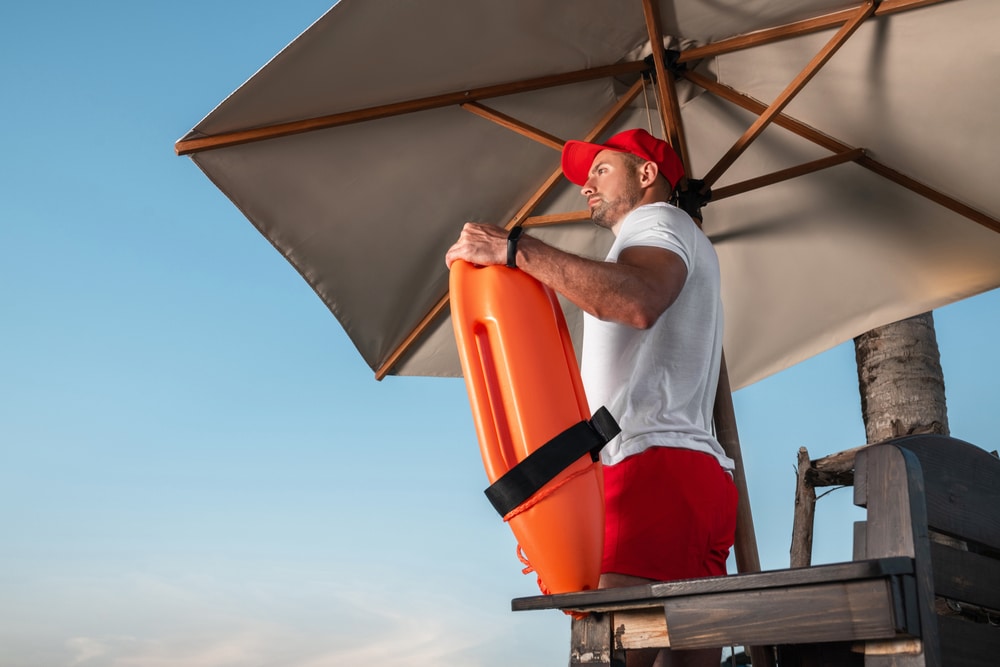
A lifeguard is responsible for making sure that people are safe at the beach (and at swimming pools). They go through training in water rescue techniques and first aid, and their job is to monitor swimmers and respond quickly in case of emergencies or potential dangers.
42. Surfboard
Remember those beach bum movies? The characters in those movies probably used a surfboard.
A surfboard is a long, narrow board that surfers take out into the water and stand on. If you do it right, you can ride a wave—meaning you stay on top of a wave until it comes crashing down.
43. Boogie Board
A boogie board is like a small version of a surfboard. Instead of standing on one, you lie down and use it to paddle out into the water.
44. Paddleboarding
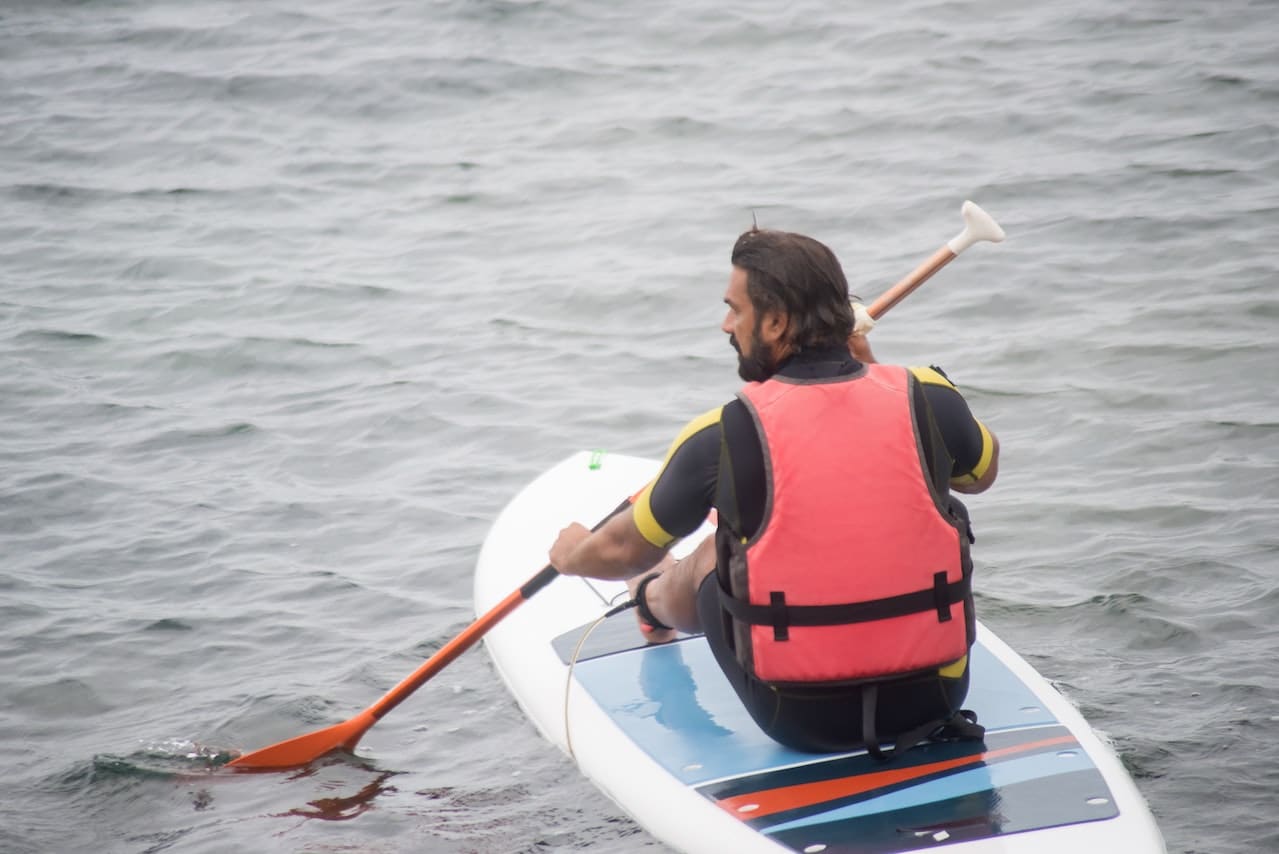
There are a lot of things you can do with a board on water! With paddleboarding, you stand or sit on a large board and use a paddle to move through the water. It’s more beginner-friendly than using a surfboard since the board is wider and more stable.
45. Motorboat
A regular boat uses oars (long wooden paddles) or a sail (a large piece of fabric that catches the wind) to move. A motorboat uses a motor, or engine. Motorboats can go pretty fast!
46. Snorkle
If you want to see underwater but don’t want to go too far from the surface, try using a snorkle. A snorkle is made of swimming goggles and a long tube bent upward. The goggles let you see underwater, and the tube lets you keep breathing without “coming up for air” (coming to the surface of the water to breathe).
47. Scuba
Scuba diving is a fantastic way to see even deeper under the water. Scuba is an acronym (a shortening of words) that stands for “self-contained underwater breathing apparatus.” Most native speakers don’t know that, though! Scuba diving uses a full suit and a tank of air to allow divers to swim down deeper than snorkeling, and for longer periods of time.
48. Flippers
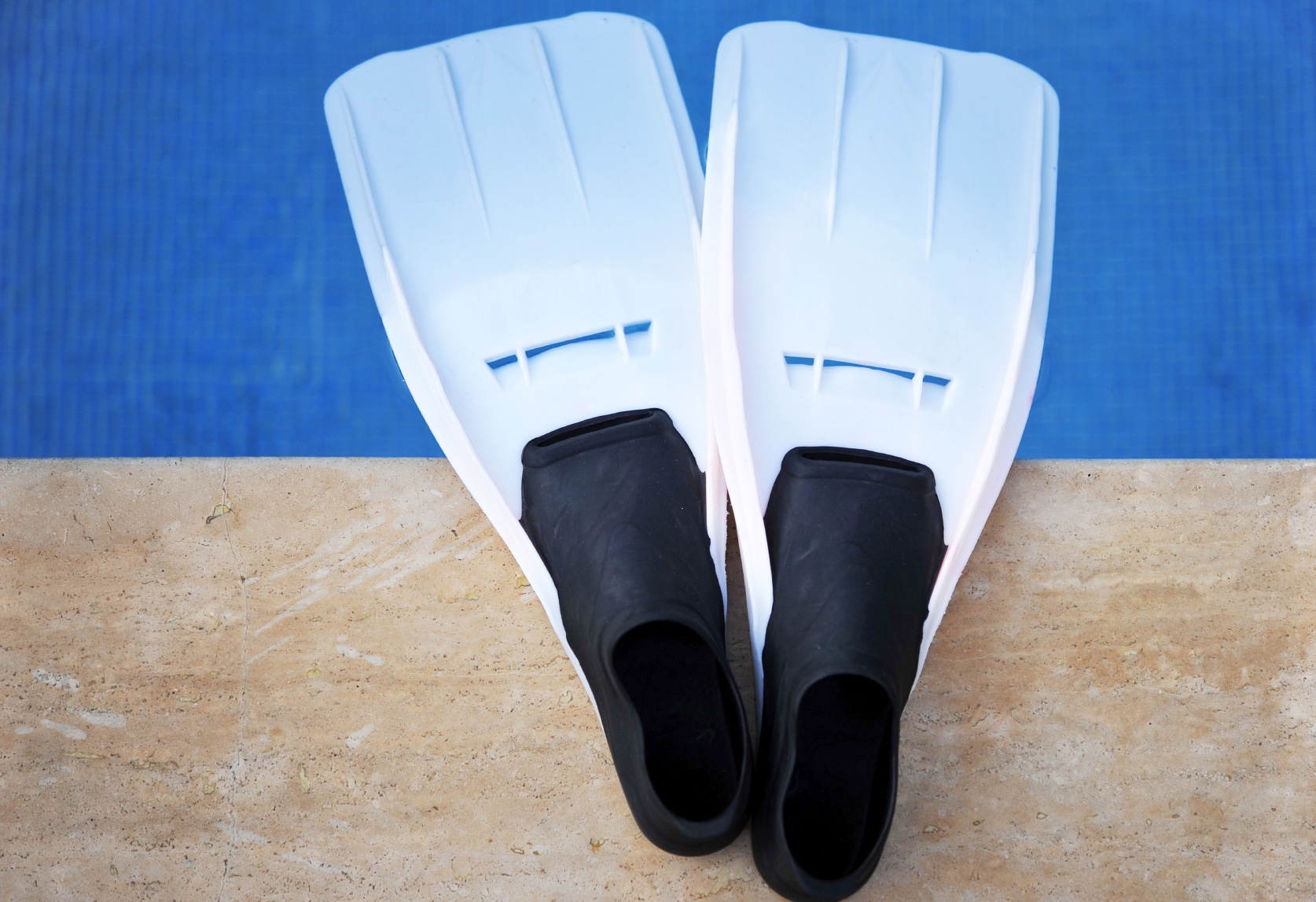
Flippers are special footwear for snorkeling or scuba diving. They’re mostly made of rubber or plastic, and they have a longer shape, which is meant to make swimming easier.
49. Windsurfing
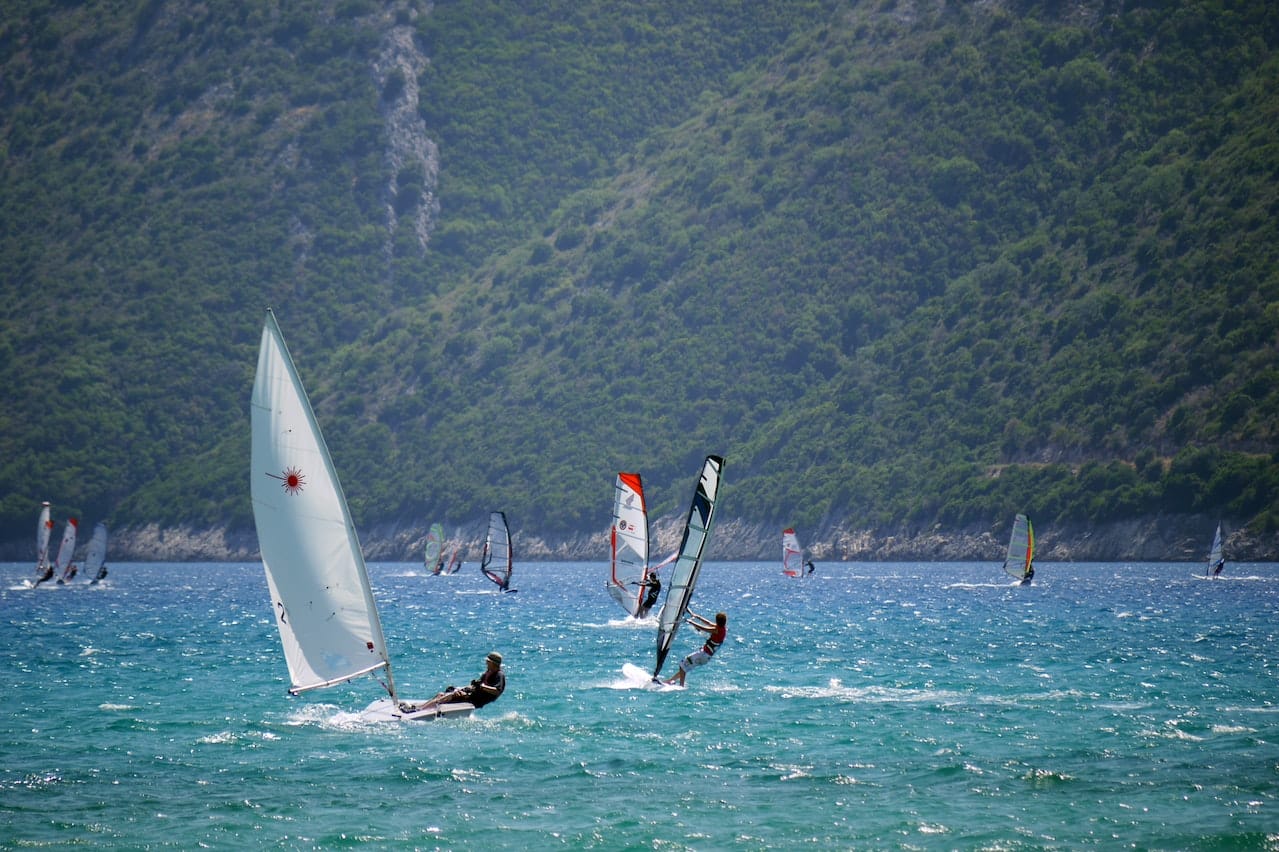
If you like sailing and surfing, then you might be interested in windsurfing! Windsurfers use a special board with a sail attached to it. They rely on the wind to move across the water while also balancing carefully on the board.
50. Kayak
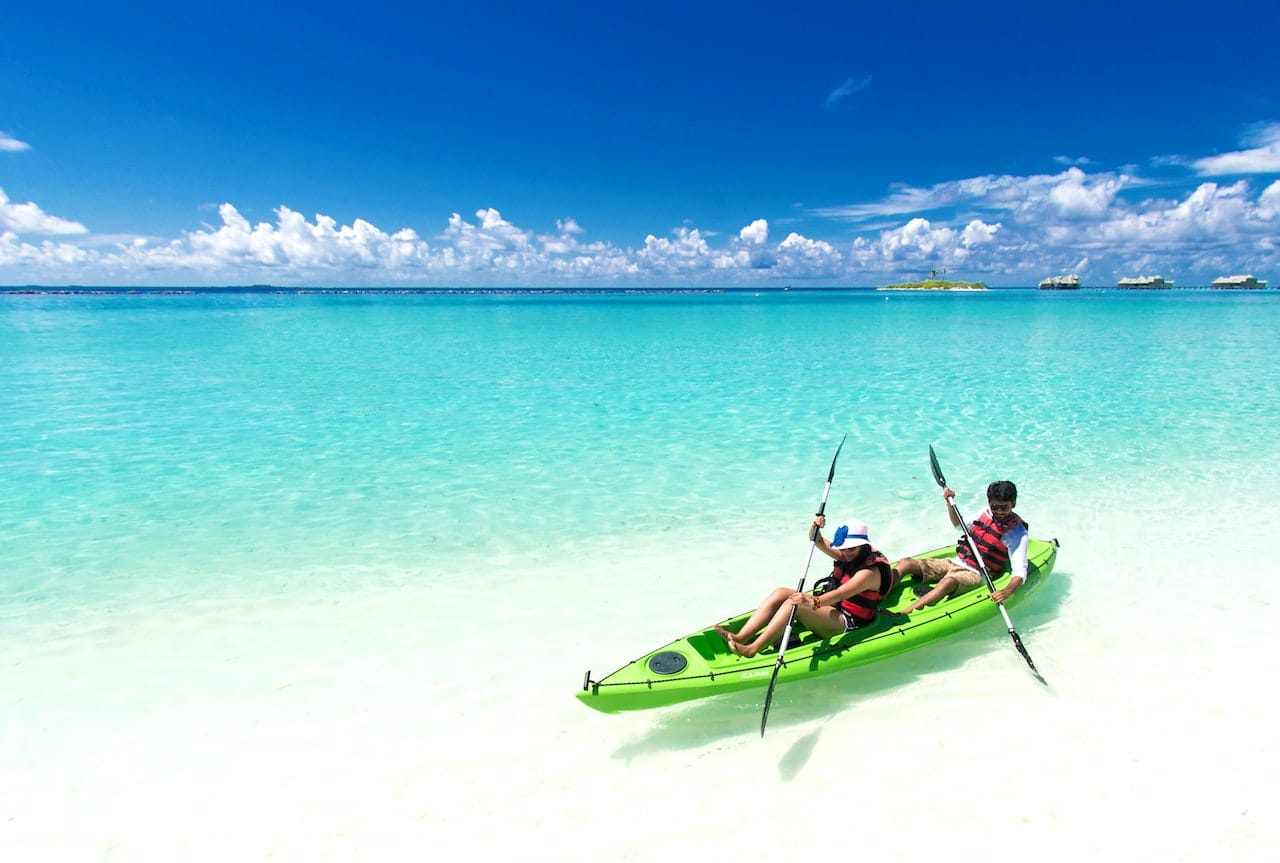
A kayak is a small, narrow boat meant for one or more people to paddle through the water. In beaches, you usually sit on top of a kayak with your legs exposed for fast entry and exit, compared to kayaks for rivers and lakes that cover your legs for more protection. Beach kayaks are fairly beginner-friendly!
Staying Safe: Beach Warnings and Cautions
Learning to speak surfer slang is fun, but there are some more important vocabulary words you should learn first.
When you go to any beach, you need to be able to understand the warning signs. Know these essential beach safety words before you hit the beach in an English-speaking country:
- High tide: The tide is the rise and fall of the sea or ocean. When the tide is high, the water reaches farther up the beach, and can get much deeper. Know when the high tide comes in, so you can avoid getting caught in deep water.
- Rip current: A current is water that’s moving in one direction. A rip current is a potentially dangerous narrow current that pulls water away from the shore. Rip currents are sometimes also called “undertows” because they can feel like the water is dragging you down.
- Hazard: A hazard is something that is dangerous. This isn’t just a beach term, so you should know it for your general safety! On the beach, common hazards can include tides, currents, mud, or certain species of sharks. Don’t walk or swim in an area with a hazard sign.
- Jetties: A jetty is a line of large and heavy rocks that extends into the water in a straight line. Jetties are meant to keep the water under control near the shore, and to help boats and other water vehicles to come home safely. Otherwise, jetties can be dangerous. People aren’t allowed to walk out on them because there’s a risk of getting hurt between the rocks, or being pulled under the water by a strong current.
Have You Heard English Beach Slang in the Movies?
Aside from the vocabulary above, beach slang is also pretty common.
“Hang ten, dude!”
Have you heard those words before? To hang ten means to stand on a surfboard and hold onto the board with your (ten) toes.
Another slang phrase is beach bums, meaning people who hang out by the beach, go surfing and don’t do much else. TV shows like “Baywatch” and movies like “Psycho Beach Party” are full of characters who seem to never leave the beach, and they always talk the same way.
In California and other coastal areas, you might hear beach slang terms like gnarly and rad, which both mean “awesome.” These are especially common in older movies and shows. You might also hear dude (a very informal way to say “guy”) or beach bunny (a girl who spends a lot of time at the beach).
If you’d like to hear even more beach slang before you hit the beach, watching videos with FluentU can help you pick up English vocabulary that native speakers often use.
FluentU takes authentic videos—like music videos, movie trailers, news and inspiring talks—and turns them into personalized language learning lessons.
You can try FluentU for free for 2 weeks. Check out the website or download the iOS app or Android app.
P.S. Click here to take advantage of our current sale! (Expires at the end of this month.)
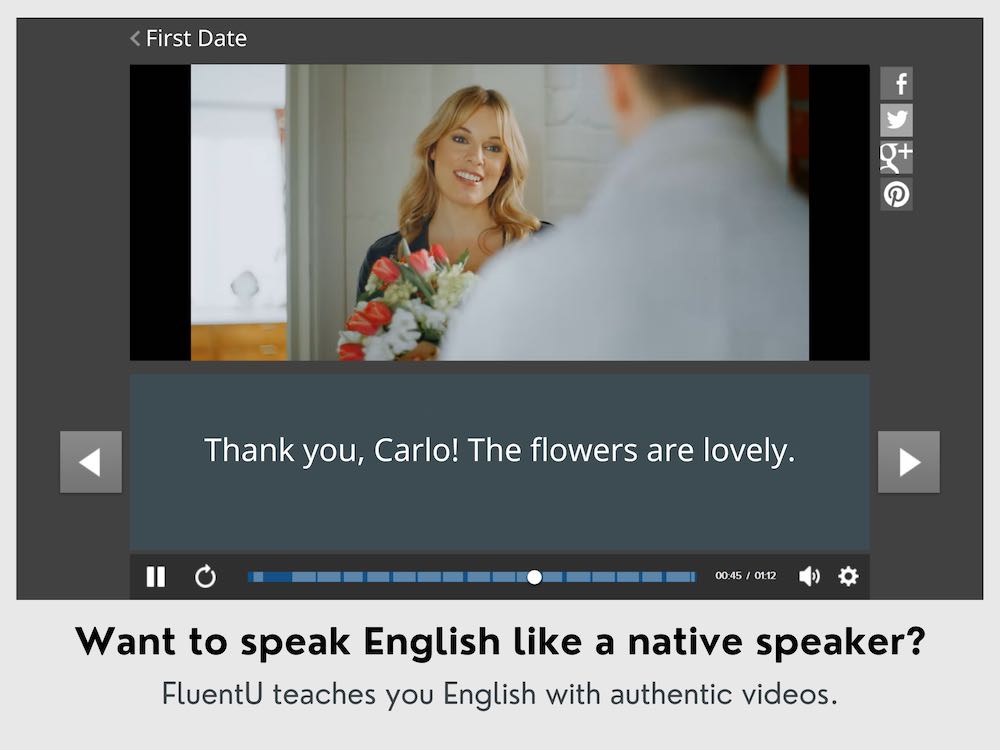
You can also learn more English beach slang here, for fun! Just remember, this kind of slang is only used at the beach, unless you’re making a joke.
If you weren’t excited about going to the beach before, we know you are now.
And you’ll be able to tell all your friends about your beach trip in English!
Download: This blog post is available as a convenient and portable PDF that you can take anywhere. Click here to get a copy. (Download)
And One More Thing...
If you like learning English through movies and online media, you should also check out FluentU. FluentU lets you learn English from popular talk shows, catchy music videos and funny commercials, as you can see here:
The FluentU app and website makes it really easy to watch English videos. There are captions that are interactive. That means you can tap on any word to see an image, definition, and useful examples.
For example, when you tap on the word "searching," you see this:
Learn all the vocabulary in any video with quizzes. Swipe left or right to see more examples for the word you’re learning.

FluentU helps you learn fast with useful questions and multiple examples. Learn more.
The best part? FluentU remembers the vocabulary that you’re learning. It gives you extra practice with difficult words—and reminds you when it’s time to review what you’ve learned. You have a truly personalized experience.
Start using the FluentU website on your computer or tablet or, better yet, download the FluentU app from the iTunes or Google Play store. Click here to take advantage of our current sale! (Expires at the end of this month.)
